Do You Need A Good Camera To Make A Professional Film
The best film cameras in 2022: how to recapture the magic of picture show in the digital age
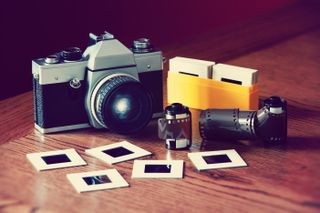
The all-time film cameras are the perfect fashion to ride the wave of analogue popularity in 2022 and across. Once thought dead, film has made a hell of a comeback in contempo years, largely buoyed past Instagram, as more and more photographers discover the addictive pleasures of counterpart shooting, an alchemical thrill that can't exist replicated in megapixels.
Why practice people still shoot film? There's a lot to love: the physical permanence of it, the excitement of trying different picture show stocks and seeing how unlike they look. And there'south likewise the delayed gratification, which may seem a strange thing to say, but there is something exciting virtually the unknown quality of shooting film, and the delay between pressing the shutter and actually seeing the image you captured. Information technology's exciting! And so in that location's also the fact that many pic cameras only await absurd, and are built with a metal durability that's arguably superior to the disposable plastic of today.
• We've been boot off a serial of retro camera reviews for those who tin't get enough of analogue shooting. We've already examined the footing-breaking Catechism AE-1 , the mechanical Nikon FM2 and the students' favorite, the dependable, no-nonsense Pentax K1000 . These cameras were pop on release, but have since become legends in the film customs, and yous'll see them equitably feature in this guide.
Buying used film cameras is a scrap of a minefield, but like film shooting itself, is a lot of fun for its unpredictability. You can't rely on warranty and digital retailers, and instead have to become a savant at sorting the deals from the dross, using eBay and other second-hand sites, and perchance even rummaging through a car boot auction or flea market. We've kicked off our guide with a section all most the best used film cameras, to give yous some pointers on what to look for.
Of grade, you aren't limited simply to buying 2nd-manus. There are relatively new motion picture cameras being made, and while they can be a little specialised and come at high price tags (the people who make them know they're the only ones in the concern), if you're willing to spend a little, you can get a truly modernistic counterpart experience. The modern Leica 1000-A hearkens dorsum to archetype rangefinders, and gives them a contemporary touch on.
Beyond 35mm film, there are also large-format 'view' cameras. These take larger film formats like 120 and sheet film, and though they're slower to shoot and more than expensive to prove, they deliver image quality that's pretty much unrivalled, with astonishing depth of focus and gorgeous latitude.
Some manufacturing accept also been focusing on ways to synergise quondam and new. We're talking in particular about Hasselblad hither, who have made something of a splash with the Hasselblad CFV Two 50C, a modular system that tin can fit directly onto the archetype Hasselblad 500 c/g (1 of the cameras on our list below). It uses digital technology to give these old film cameras a new lease of life, and is an exciting glimpse of the ways analogue and digital might continue to meld in the time to come.
• The best 35mm picture show, roll film, and sheet picture show to buy
Another contemporary player in the counterpart infinite is Lomograpghy, who produce a tonne of old-fashion cameras, lenses and films all based effectually recapturing an analogue experience. We've included a section dedicated to the best Lomography cameras which includes loads of resurrected old camera designs as well as newer models, using dissimilar film types. These aren't the cameras you desire if you're hunting for technical perfection, but they're huge amounts of fun.
In that vein, call up disposable cameras? Single-utilize cameras are notwithstanding fantastic for holidays, family fourth dimension, parties and more, and these days you lot tin can become cheap disposable cameras loaded with total 35mm movie, giving you real quality at your disposal. One is even underwater, and all the same good digital may be, it can't give you an underwater camera for $15/£15.
We've collected it all for this list. Ane thing to note though is that if yous're looking for the knockabout fun of instant movie, Polaroid-way, and then our dedicated guide to the best instant cameras is where you want to be. So without further ado, let'southward crack on with the best film cameras you lot can buy.
The all-time film cameras in 2022
All-time used 35mm movie cameras
We've picked out ten 'classic' flick cameras you tin can withal detect in expert working condition today – that's an important cistron, because the best film cameras are the ones that are all the same working! At that place are many more we could accept included, only these are based on popularity, reputation and toll, with a few almost-forgotten masterpieces thrown in. The first five are 35mm cameras, the second five are medium format roll film cameras. And yep, you can buy both types of film quite easily even today.
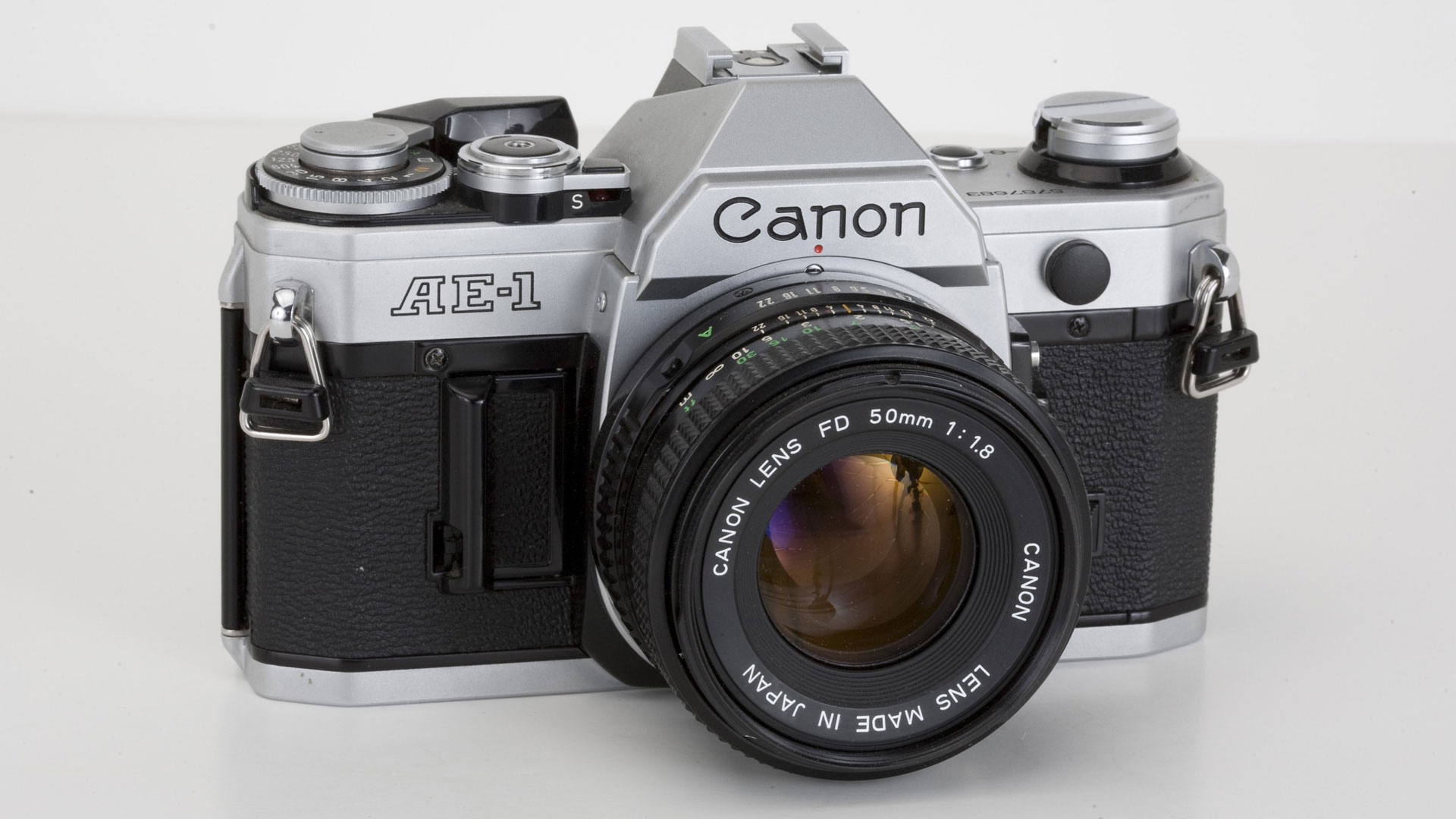
The Canon AE-1'due south plastic structure kept the price affordable for novices and enthusiasts, while its electronically controlled textile focal airplane shutter offered a wide and repeatable shutter speed range. This meant it needed a bombardment to ability its operation but offered more potential consistency than mechanically operated shutters. The AE-1 used Catechism's FD breech-lock bayonet mountain, which has since been superseded by its EF lens mount, though adaptors are bachelor. Metering was carried out by a single silicon photocell offering middle-weighted meter. The AE-1 was unusual for offering shutter-priority automation at a time when most makers favoured aperture-priority operation. The AE-1P was a later variant that added a program AE mode.
Read more than: Catechism AE-1 review – we revisit this groundbreaking legend.
• Used Canon AE1 deals on eBay.com
• Used Canon AE1 deals on eBay.co.uk
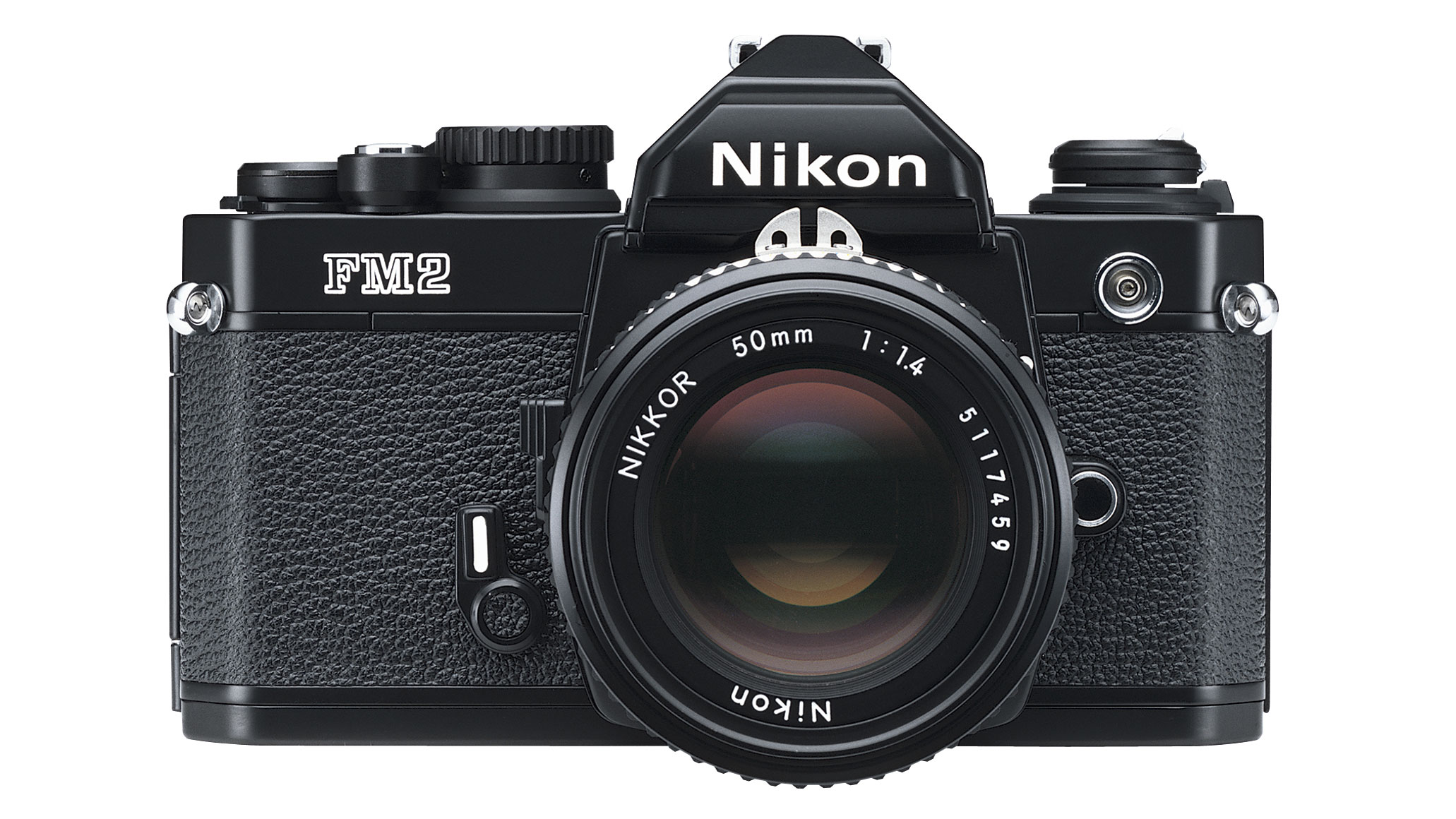
The Nikon FM2 came out at a time when other makers were bringing out smaller, cheaper SLRs and new electronic controls, so it seemed a scrap of a throwback even so. But its handsome looks and its reputation for longevity and immovability drew lots of fans and kept it in product correct up until 2001. If y'all think the current Nikon Df looks expert, you need to pick up an FM2. It used a vertical metal shutter rather than the horizontal rubberized cloth shutters in most rival DLRs but it was fully mechanical then the FM2 could piece of work without a bombardment – this was but needed for the internal light meter. Its 1/4000sec top shutter speed and tough copper-aluminum-silicon alloy body made it sought after amongst pros, not just enthusiasts.
Read more than: Nikon FM2 review – affordable for amateurs and loved by pros
• Used Nikon FM2 deals on eBay.com
• Used Nikon FM2 deals on eBay.co.britain
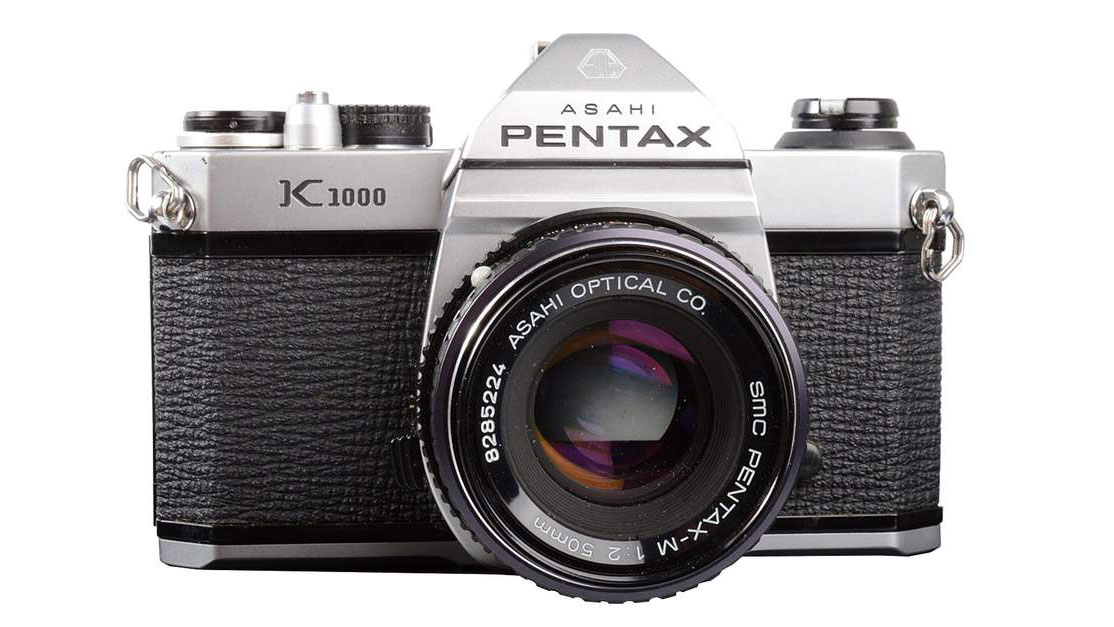
The K1000'south reputation has adult through what must have been seen at the time as unproblematic cost-cutting. Information technology was the cheapest of Pentax'southward DSLRs and even had the self-timer and depth of field preview on other models removed, just to save money. Information technology'due south an entirely manual camera, and although information technology does need a battery for its meter, the mechanical shutter will operate without one. Generations of students take come to dearest this camera for its depression cost, simplicity and immovability, while generations of lecturers have called it for its purely manual controls and the way it forces y'all to learn exposure theory. The K1000 uses the Pentax K bayonet mountain still in use today (though with some revisions for autofocus and electronics).
Read more: Pentax K1000 review – a no-nonsense manual archetype
• Used Pentax K1000 deals on eBay.com
• Used Pentax K1000 deals on eBay.co.uk
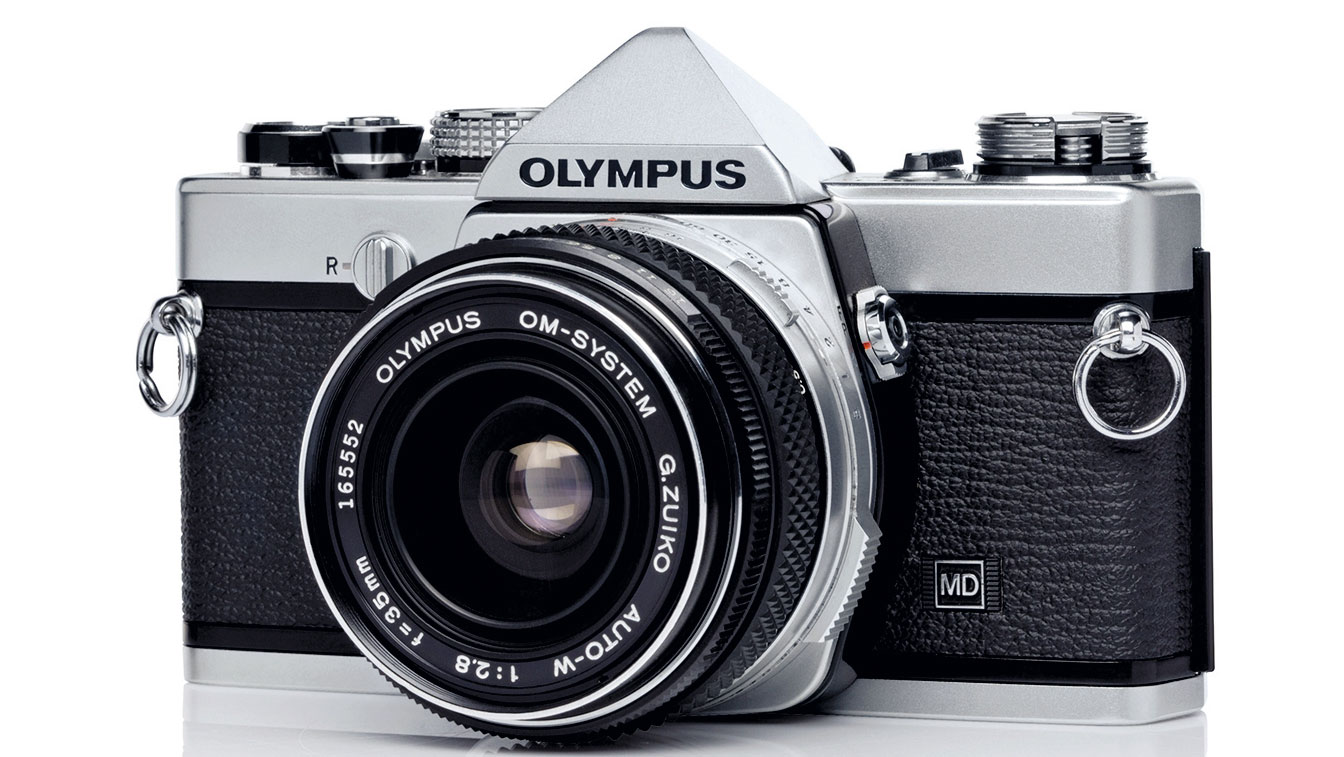
The 1970s were a gilt age for 35mm SLRs and one of the meridian models of the time was the Olympus OM-1. It was a purely manual SLR, flanked by a more expensive OM-2 and cheaper plastic OM-10 with added discontinuity-priority exposure modes. The OM-1 was designed past the same team that produced the PEN and PEN F, the models that inspired today's digital PEN models. The OM-1 was tiny compared to other bigger, heavier SLRs at the time, yet still boasted a big, bright optical viewfinder which even had interchangeable focusing screens. Unusually, the shutter speed was adapted via a ring effectually the lens, while a big dial oin the superlative of the camera was reserved for setting the ASA (ISO) value for in-built low-cal meter – this was before the introduction of DX coding on picture show canisters.
• Used Olympus OM1 deals on eBay.com
• Used Olympus OM1 deals on eBay.co.uk
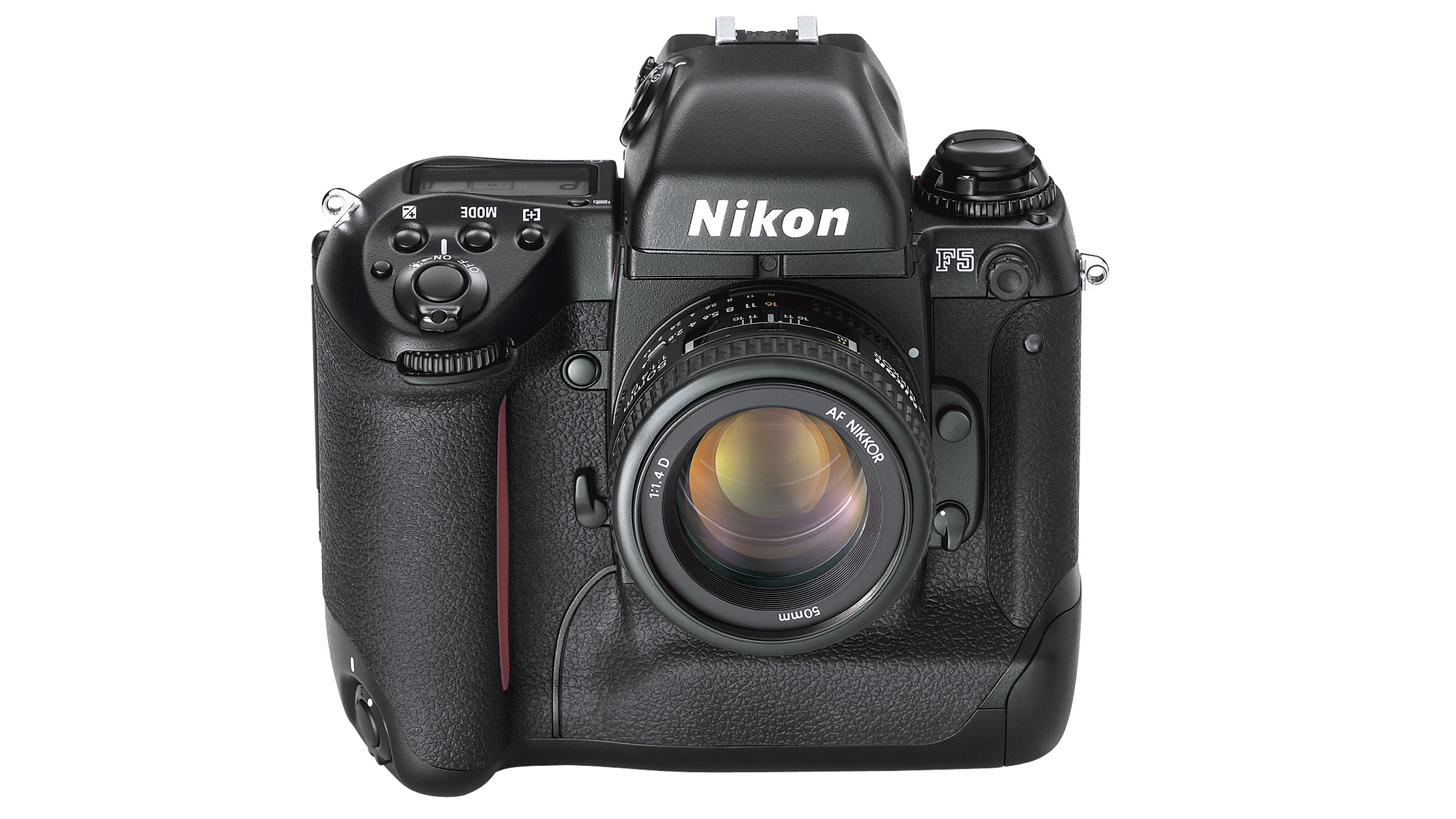
The Nikon F5 is the last professional person bodied, fully autofocus moving picture SLR that was produced past the company. Today, it is your all-time bet if you are looking for a truly advanced motion-picture show SLR that features groovy autofocus, aperture and shutter priority modes, equally well as existence able to use fully manual lenses. The F5 also automatically reads your motion picture speed so not dialling in your ISO manually. With all theses advanced professional features and pro trunk styling, you do sacrifice portability slightly, the F5 is built similar a tank, but that means it is a rather weighty photographic camera that wouldn't necessarily exist a pinnacle choice for a travel camera however, for anything else information technology would be the best "go to" for the job.
• Used Nikon F5 deals on eBay.com
• Used Nikon F5 deals on eBay.co.u.k.
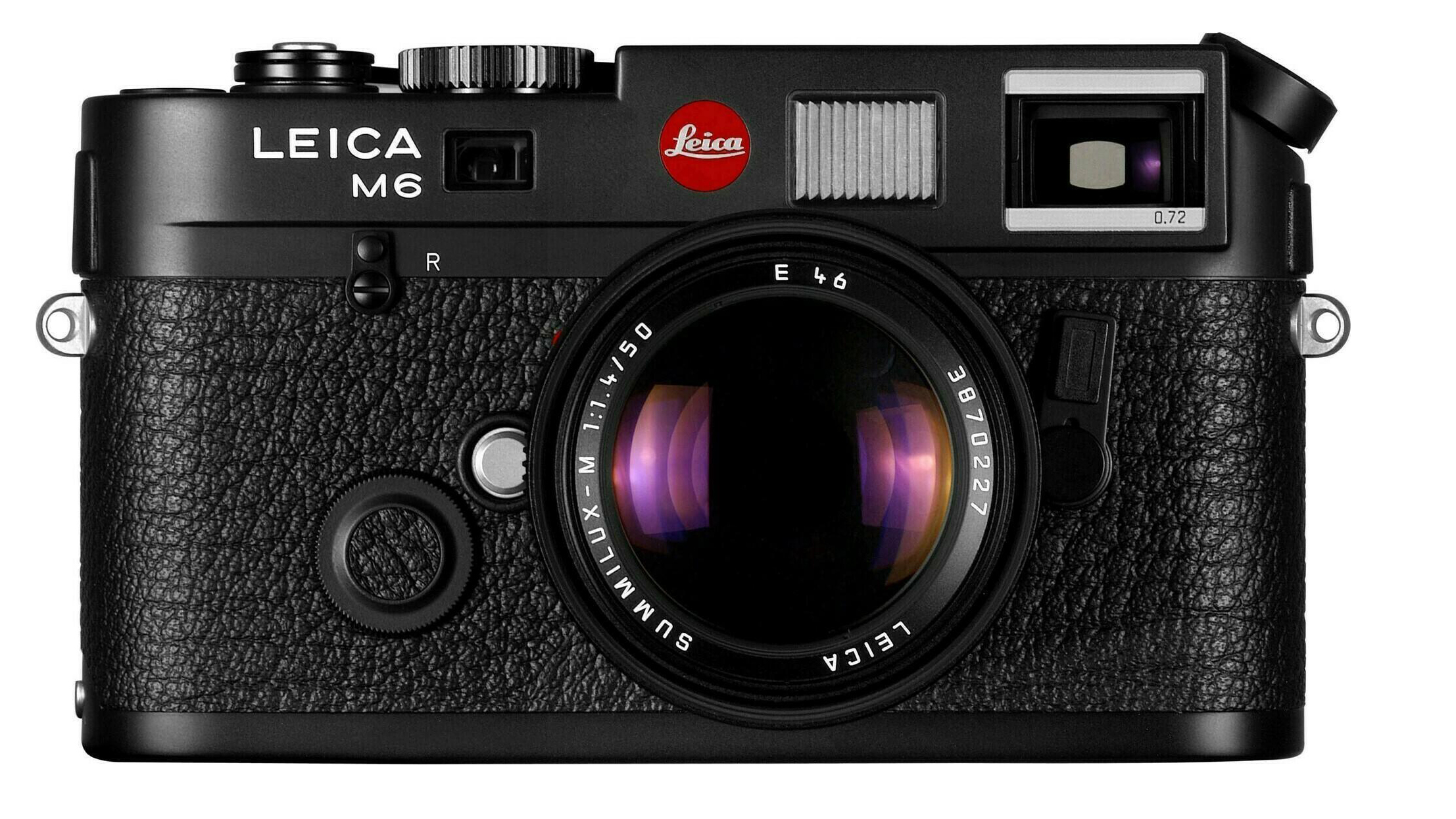
Leica 1000 rangefinders will ever exist controversial and tin take a bit of getting used to. However, the rangefinder focusing is fast and precise in the right easily but takes some learning. But once mastered the M6 can produce some fantastic results, information technology has been a fan favourite for some time, and now has a rather cult following in the picture show community, so you lot will take to pay a hefty cost to get a expert ane. This is only the start, because Leica lenses are equally expensive. But if y'all like your film photography to be stripped back to its nuts, the M6 volition oblige. You lot'll need to apply the settings yourself and you'll demand to focus yourself, but for Leica Yard fans that'due south what it means to be a photographer.
• Used Leica M6 deals on eBay.com
• Used Leica M6 deals on eBay.co.u.k.
Best used medium format movie cameras
If you asked whatever professional photographer in the 1960s, 1970s or 1980s which was the best film camera, they would accept said a medium format camera. This might have been a twin-lens camera like a Mamiya C330 or a medium format SLR similar a Hasselblad 500 C/M. For pro photographers, medium format cameras were the standard, large format was for 'expensive' clients and 35mm was for amateurs. Probably!
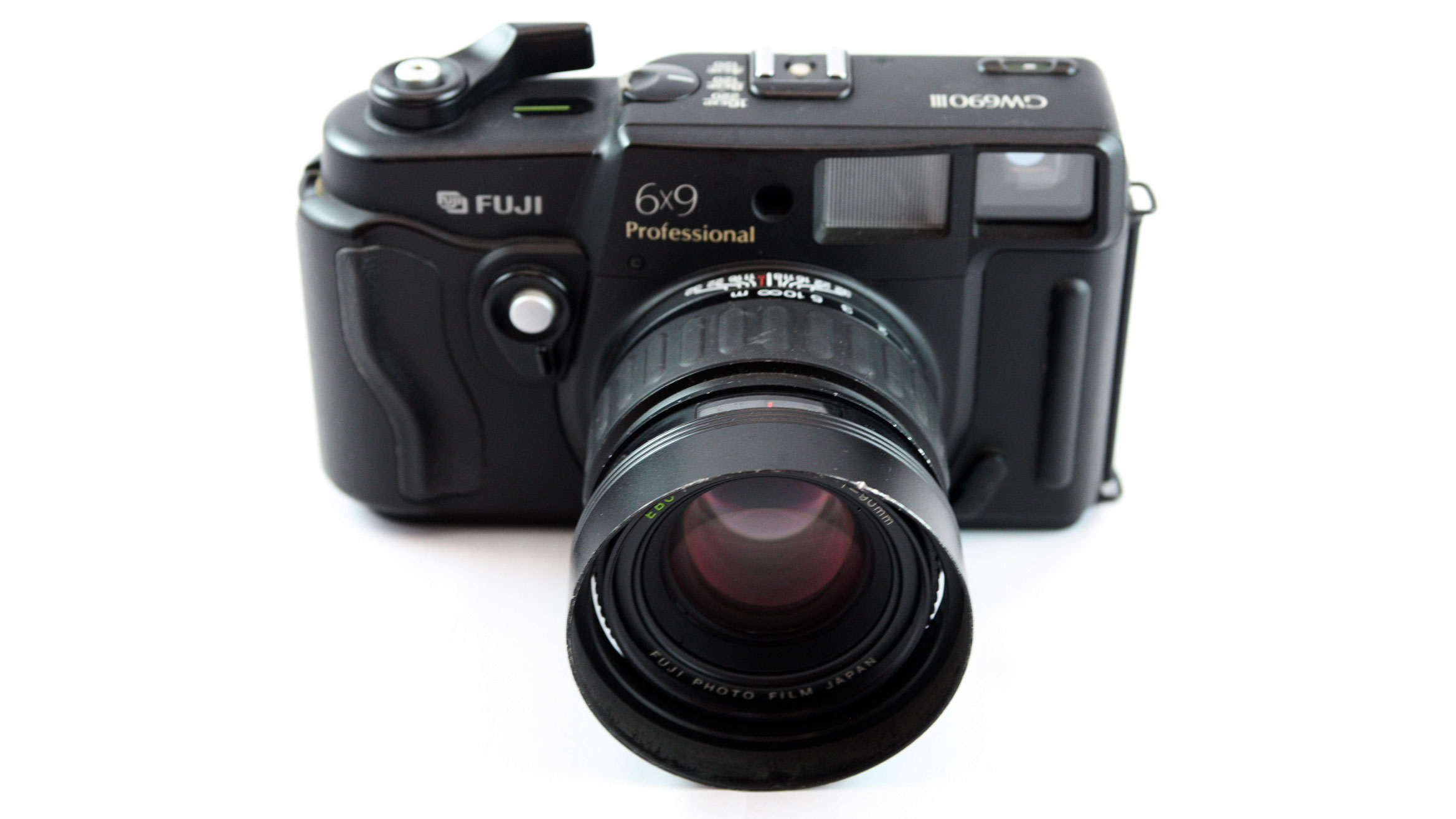
The nifty thing about movie, and peculiarly medium format 120 roll film, is that it'due south and so flexible – both literally and metaphorically. The film rolls are 120mm wide, but it's upward to the photographic camera maker how much width they want to use. half dozen 10 iv.5cm medium format cameras shot rectangular images 'sideways' on a roll, regular 6 x 6cm cameras shot square images then it didn't matter which mode you lot turned the photographic camera, but other cameras like the RZ67 above and the Fuji GW690 shot actress-wide images. You lot got fewer exposures on a roll, but extra-large negatives and transparencies. The GW690 is a no-frills fixed-lens manual exposure camera that offers huge images in a comparatively portable bundle.
• Used Fuji GW690 deals on eBay.com
• Used Fuji GW690 deals on eBay.co.u.k.
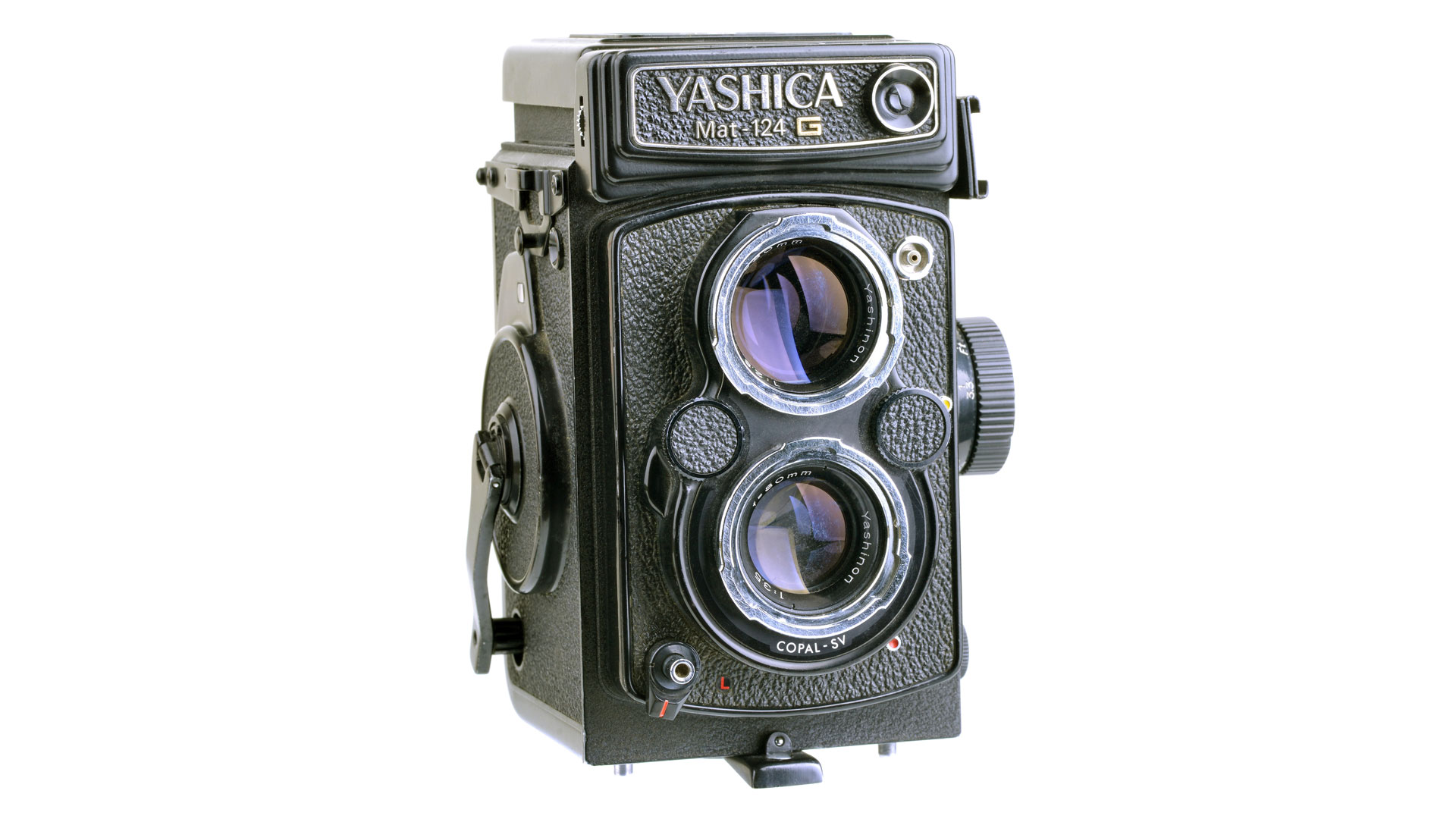
Twin lens reflex cameras utilise a unique double-lens design, with the photographic camera and its taking lens in the bottom half and a matched lens for viewing and composing photos in the top half. The viewing lens projected an prototype of the scene on to a ground drinking glass screen viewed by flipping up the lid, which sprung open into a kind of lightbox. The image was reversed, which took a scrap of getting used to, simply the combination of a square image (long earlier Instagram!) and waist level viewing encouraged compositions and angles that you just don't 'encounter' with other cameras. It's a unproblematic and reliable pattern that shoots 12 frames on medium format 120 curl motion picture, with shallow depth of field effects we pay a fortune to achieve with modern cameras.
• Used Yashica Mat 124G deals on eBay.com
• Used Yashica Mat 124G deals on eBay.co.britain
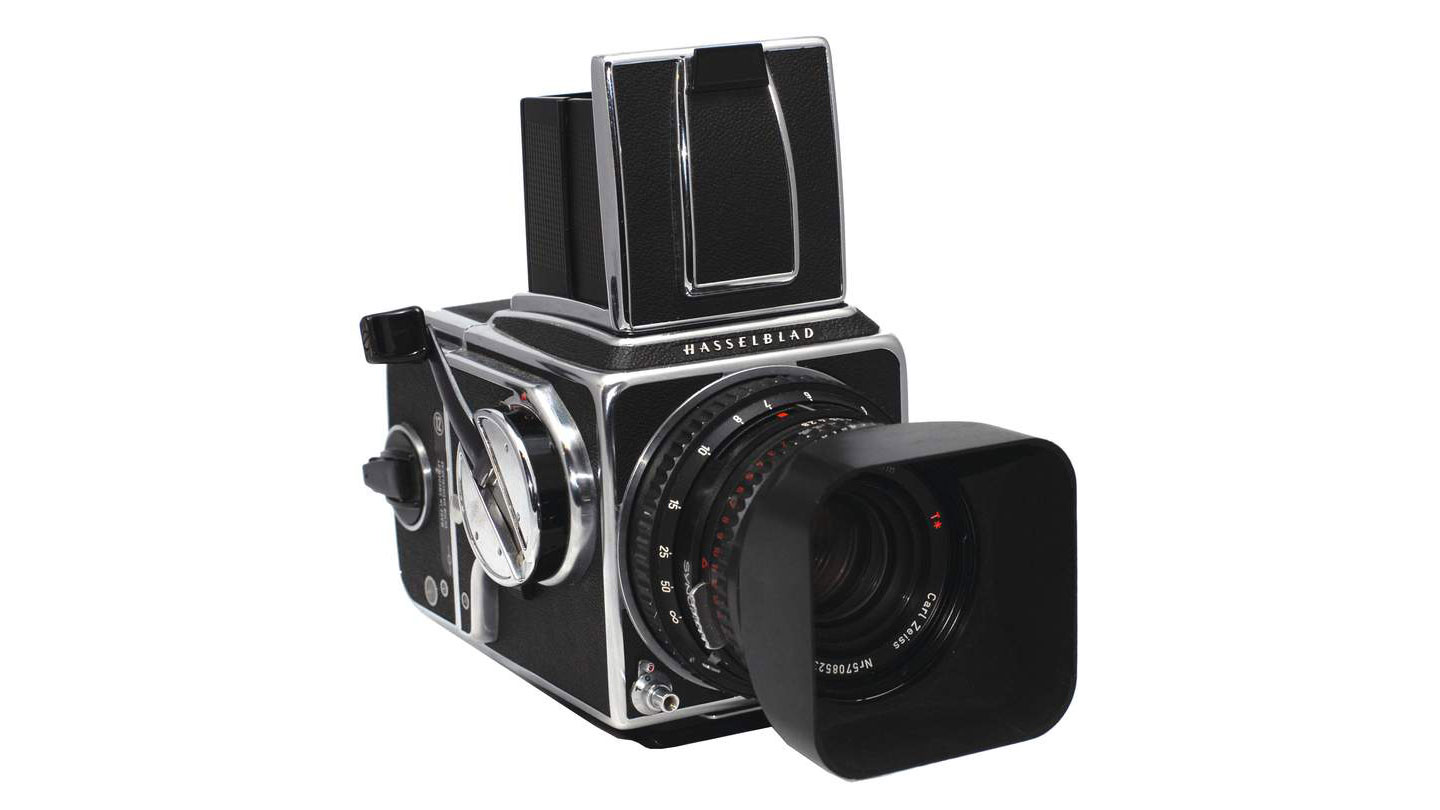
Looking at the Hasselblad 500 C/M now, information technology's hard to believe this camera design showtime arrived in 1957. Its utilitarian box-shaped design looks as if it could have been designed yesterday, and modernistic high-terminate medium format cameras yet apply its flexible, modular design. The photographic camera is the central box, to which you can fit a broad variety of lenses, a number of different viewfinder attachments and different moving-picture show backs. The interchangeable backs deserve a special mention – yous could swap backs in moments, with your banana loading new films into a spare back equally you shoot, swap between the square 6 x 6cm or six 10 iv.5cm formats or even clip on a Polaroid back to test lighting and limerick – this was instant playback (or near information technology) before digital capture was even invented.
And all-time yet, new life has been breathed into the Hasselblad 500 C/M with the release of the Hasselblad 907X 50C, a country-of-the-art digital dorsum that fits straight onto the 500 C/M with a series of satisfying clicks and clunks. A tactile counterpart experience meets digital perfection, it adds some other point in favour of this fantastic film camera.
• Used Hasselblad 500 C/M deals on eBay.com
• Used Hasselblad 500 C/Thousand deals on eBay.co.great britain
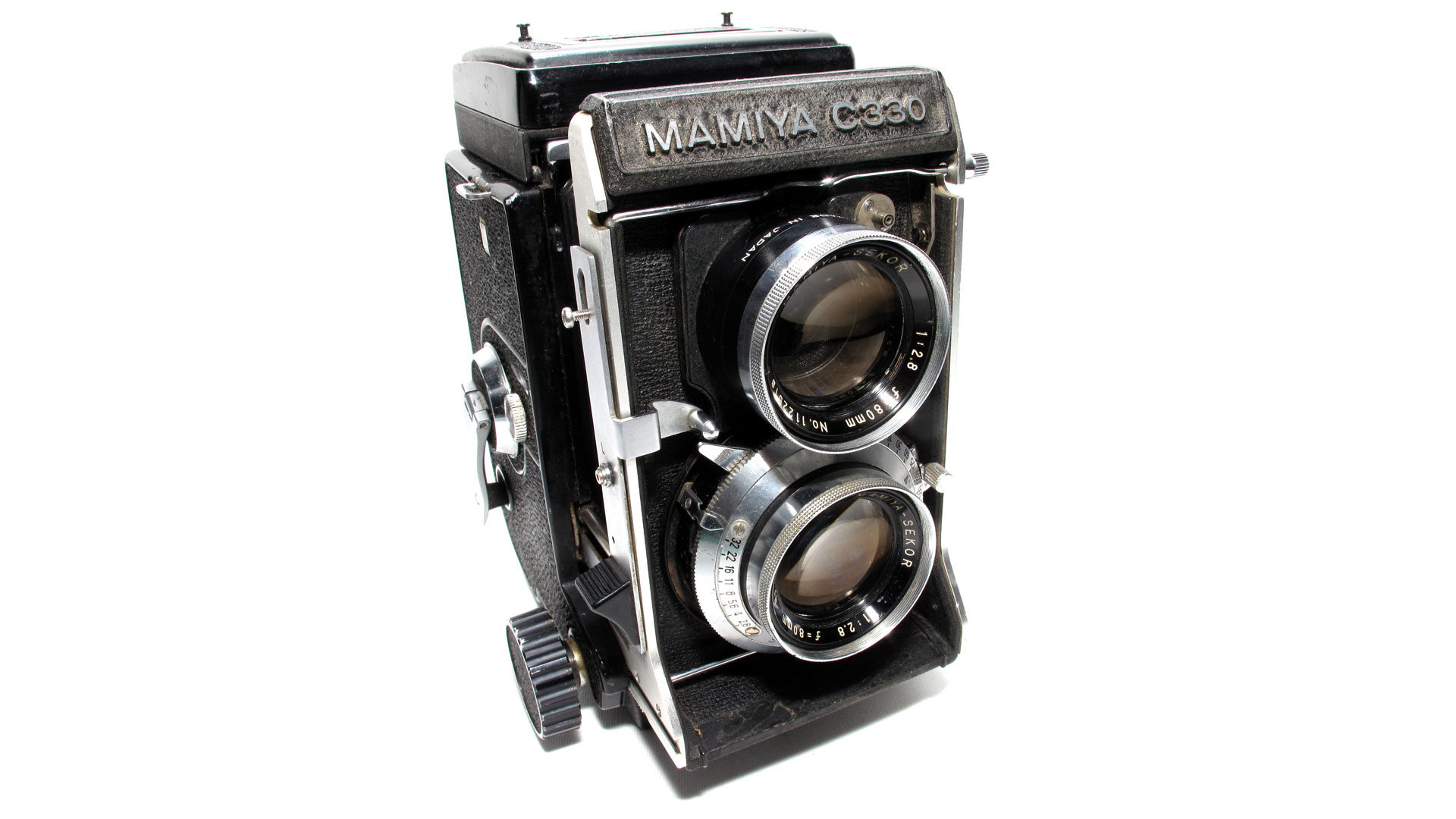
Where the Yashica Mat 124G was an affordable twin lens reverberate camera with a fixed lens, the Mamiya C330 was a professional version with interchangeable lens pairs, which was introduced and became pop in the 1970s equally a less expensive and less complex alternative to the Hasselblad 500, THE professional medium format photographic camera of the fourth dimension. The C330 was a true system photographic camera, with interchangeable lenses (from 55-250mm), interchangeable focusing screens and a choice of viewfinders. It'southward a big old lump to acquit effectually but information technology's still possible to see analog photographic camera fans and photography students however using them today.
• Used Mamiya C330 deals on eBay.com
• Used Mamiya C330 deals on eBay.co.united kingdom
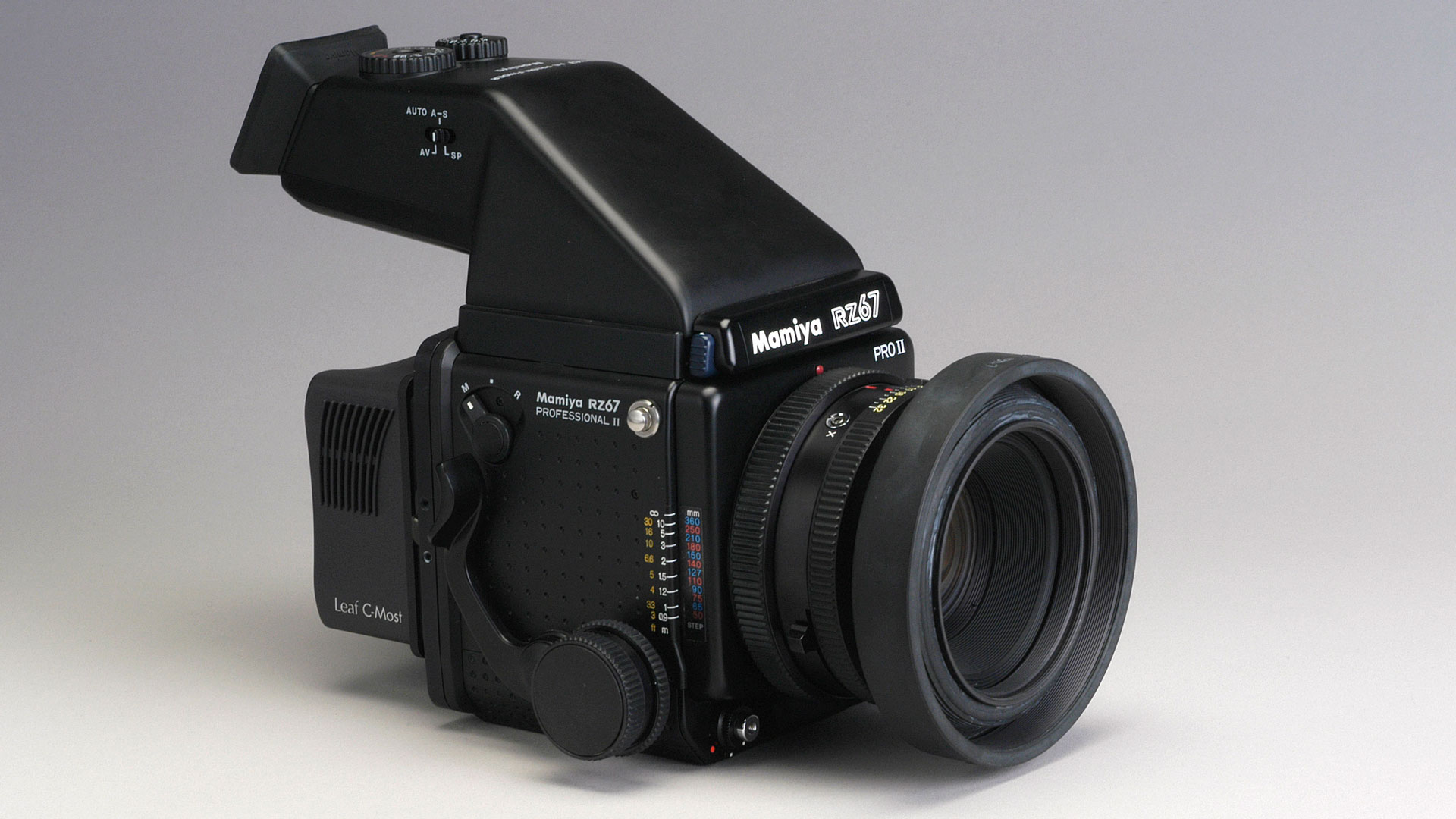
An evolution of the RB67, introduced in 1970, the RZ67 keeps the revolving dorsum that gave the earlier arrangement its name, and the just-off-square 6 x 7cm image area. Just to put this in context, this is far larger than the 6 x four.5cm area of the largest medium format digital models today. Like the Hasselblad 500 C/M, the RZ67 is a modular camera with interchangeable lenses, viewing systems and backs. It'due south a bit big and heavy for extended handheld employ, though, and it's all-time used on a tripod. High-quality medium format film cameras are holding their prices pretty well at the moment, and you might have to shop around to get a good working, affordable example.
• Used Mamiya RB67 deals on eBay.com
• Used Mamiya RB67 deals on eBay.co.britain
Modern film cameras are pretty specialised. They're aimed either at analog auteurs who just dear the wait of moving-picture show and the experience of film cameras, or technicial specialists for whom large film formats, extensive perspective-correcting photographic camera movements and the ability to mix and match a wide range of lens, film types and even digital backs is more important than than the quick-fire simplicity of regular digital cameras.
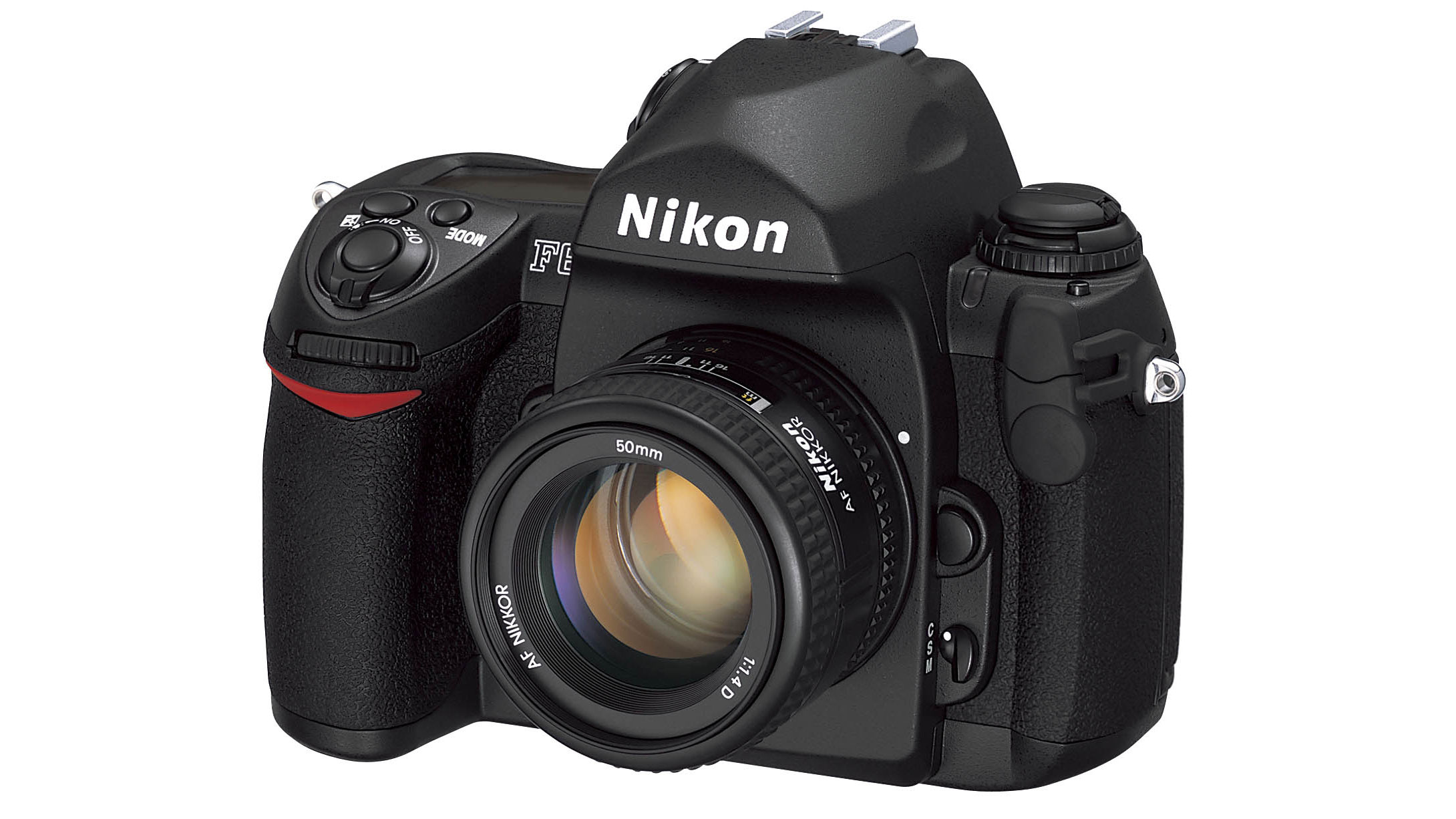
The Nikon F6 is like the missing link between old-school 35mm SLRs and modernistic digital SLR cameras. Many of its specs volition seem quite familiar to modernistic digital users, including its total program AE, discontinuity-priority, shutter-priority and manual modes, powered film advance at upward to 5.5fps and an 11-bespeak AF organization backed up by Nikons 3D Colour Matrix metering organisation. Styled past Giugiaro, the aluminum blend torso looks a dream, just the v.5fps continuous shooting speed is small past today's DSLR standards. Nevertheless, the F6 offers a chance to get a beautifully designed and made motion-picture show camera is as-new working society with modern controls and technology. The Nikon F6 is available new in some places, merely has been discontinued in many countries.
• Used Nikon F6 deals on eBay.com
• Used Nikon F6 deals on eBay.co.uk
All-time new film cameras
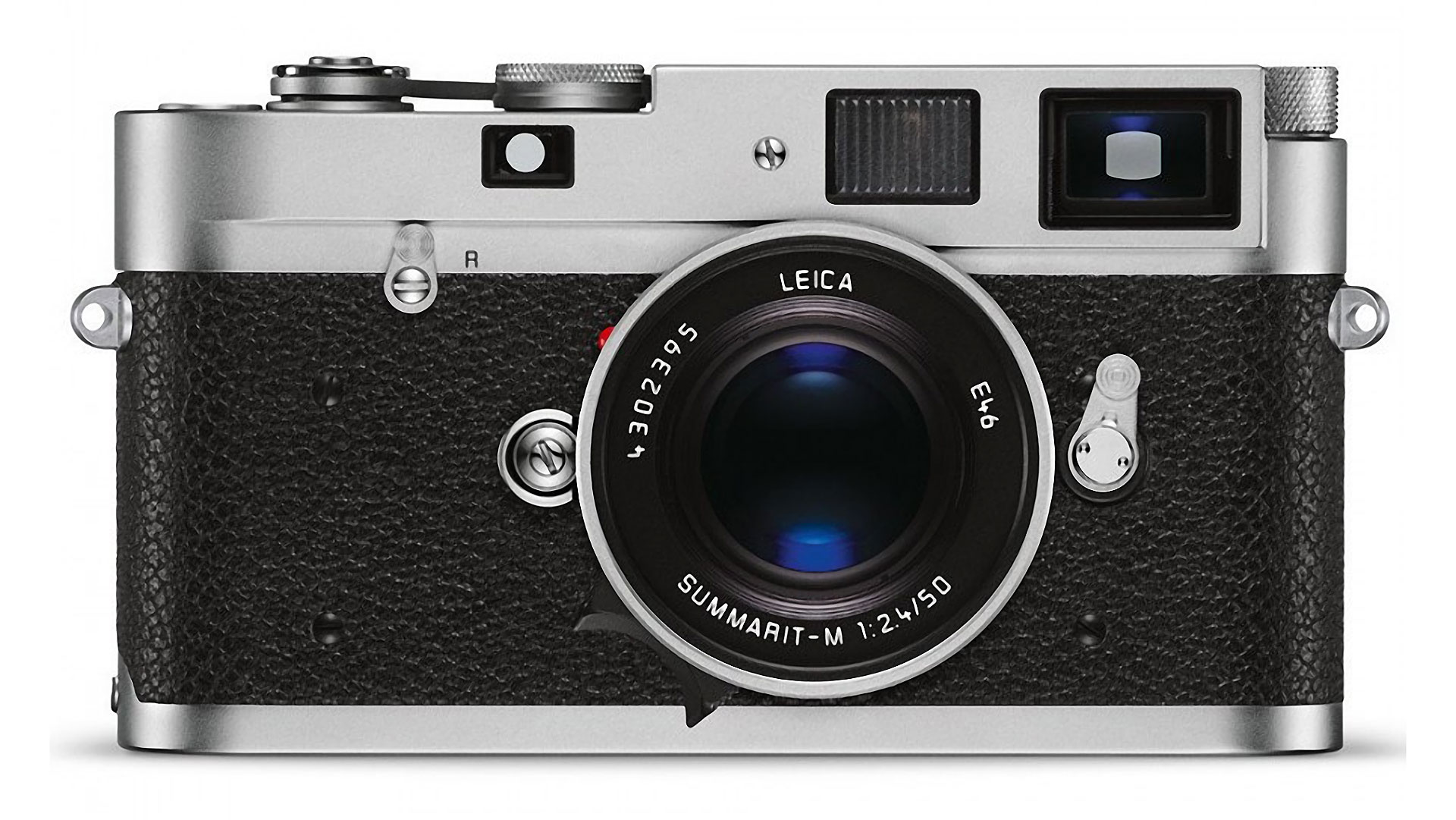
Leica K rangefinders will always be controversial. To some they're overpriced, overhyped throwbacks to an era that's long gone. To others they're beautifully made classics of engineering that accept reached a plateau of perfection. The M rangefinders accept a bit of getting used to. Rangefinder focusing is fast and precise in the right hands but takes some learning, while the pain of paying for an M-A torso is but the start, because Leica lenses are equally expensive. But if yous similar your film photography to be stripped back to its nuts, the G-A volition oblige. You'll demand to work out the exposure yourself, you'll need to apply the settings yourself and you lot'll need to focus yourself, simply for Leica M fans that's what it ways to exist a photographer.
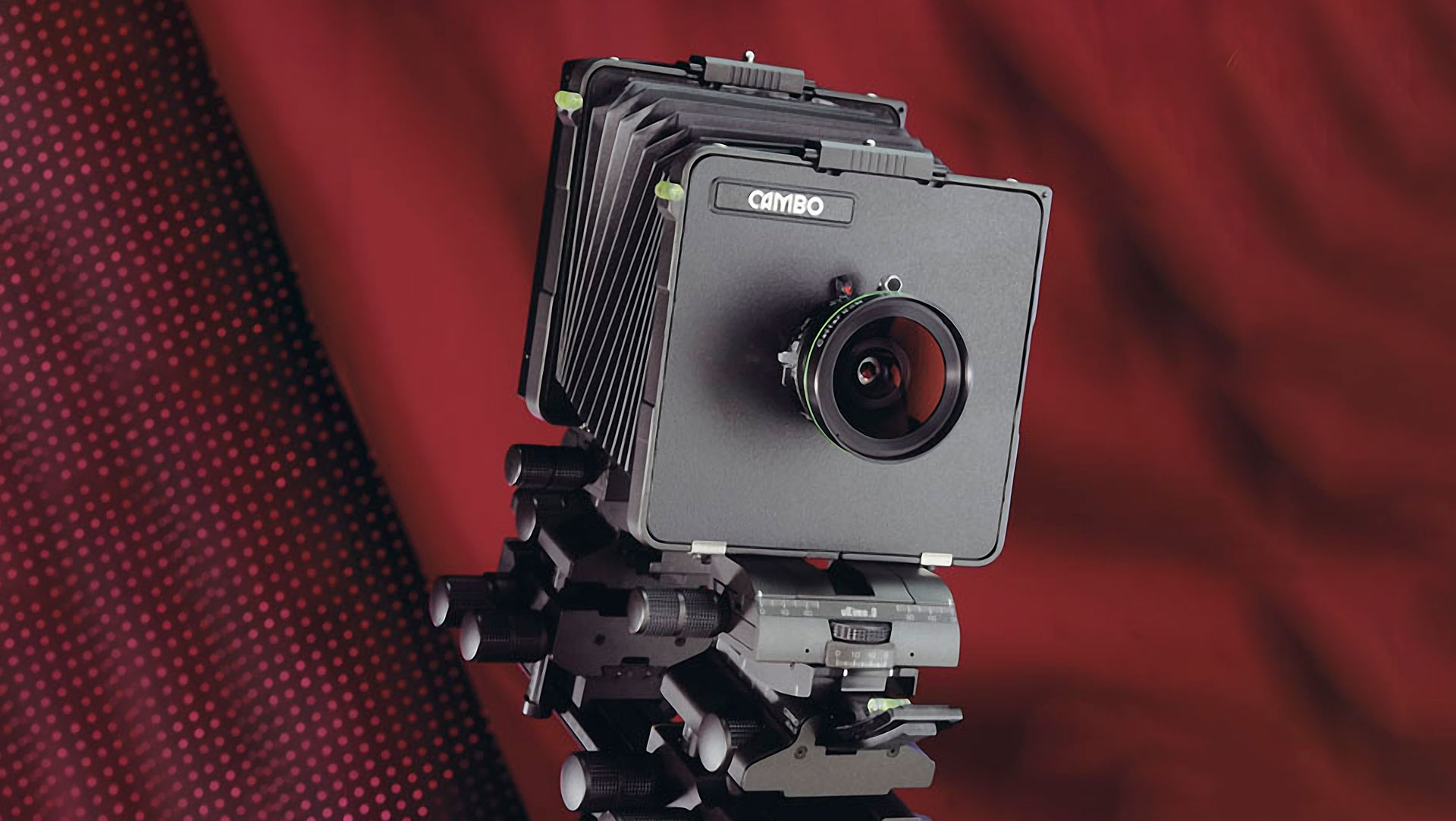
The Cambo Ultima is a modular monorail photographic camera. The Ultima 45 is not a complete camera in itself because you'll also need a lens plate and lenses and either a film or digital back. It's a very interesting crossover production that handles very high quality big format movie photography but likewise modern digital backs with much smaller sensor areas. The betoken about a monorail system is partly its supremely modular and flexible (and, uh, expensive) design, and the mode the dorsum and forepart plates can be shifted and angled independently for unprecedented control over perspective, depth of field and planes of focus. It's well suited to studio and architectural photography for those reasons, and harks dorsum to the days when top quality commercial photography was made using 5 ten four" sheet movie.
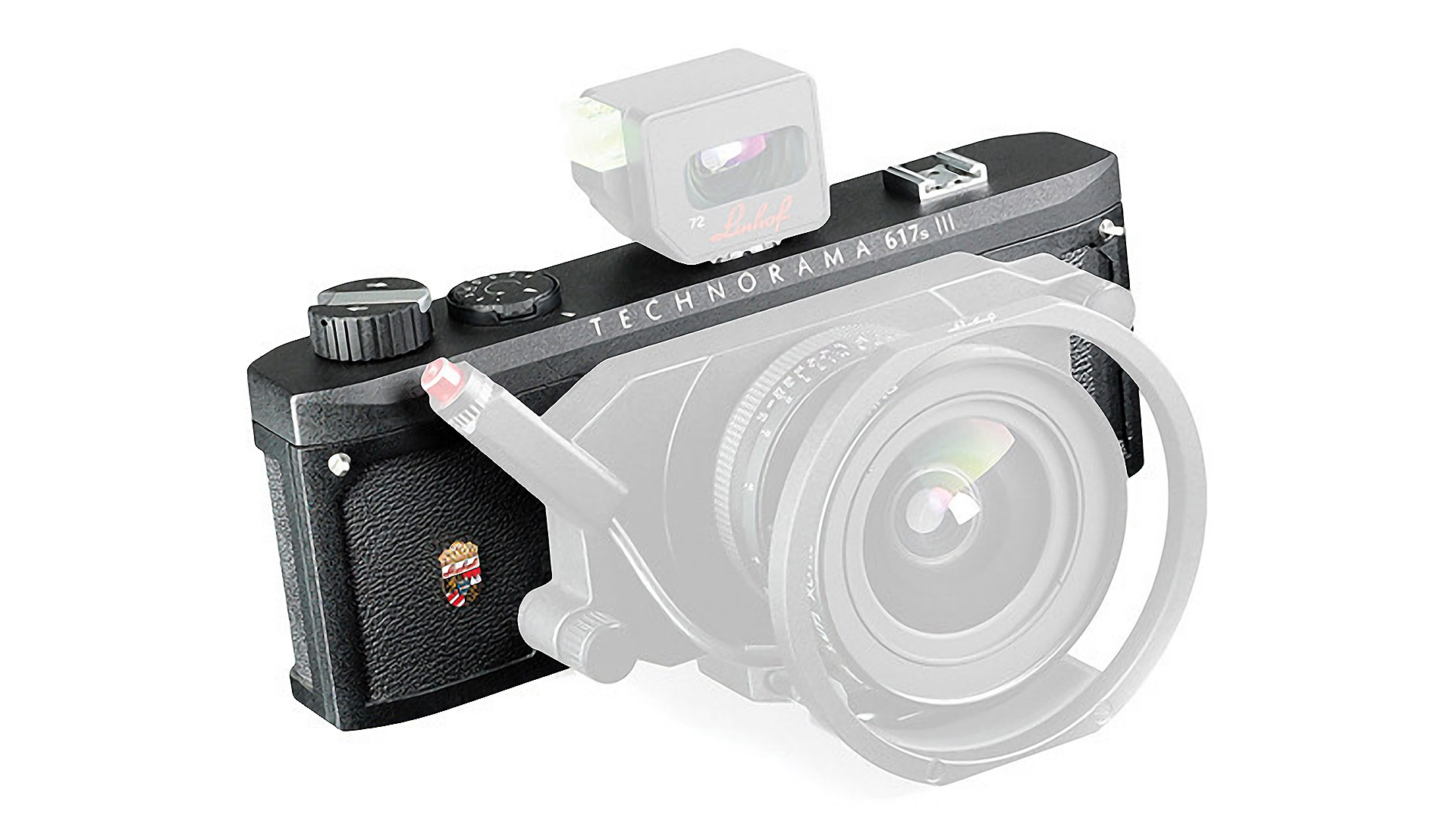
Some may think Hasselblad's much-loved XPan panoramic camera and a few more may know of the Linhof Technorama. Unlike the XPan, even so, the Technorama is still going. The Technorama 617s Three is sold body-just just a number of different lenses are available. Information technology'south a photographic camera for experts, not merely because of its manual exposure simply because of the demand for precise transmission focus (information technology doesn't accept a through-the-lens photographic camera) and the need to go on the camera absolutely level for those ultra-broad 17:6 ratio images. The Technorama is designed for high-quality technical photography and shows the flexibility still offered by the analog film format.
• Linhof Technorama 617 deals on ebay.com
• Linhof Technorama 617 deals on ebay.co.uk
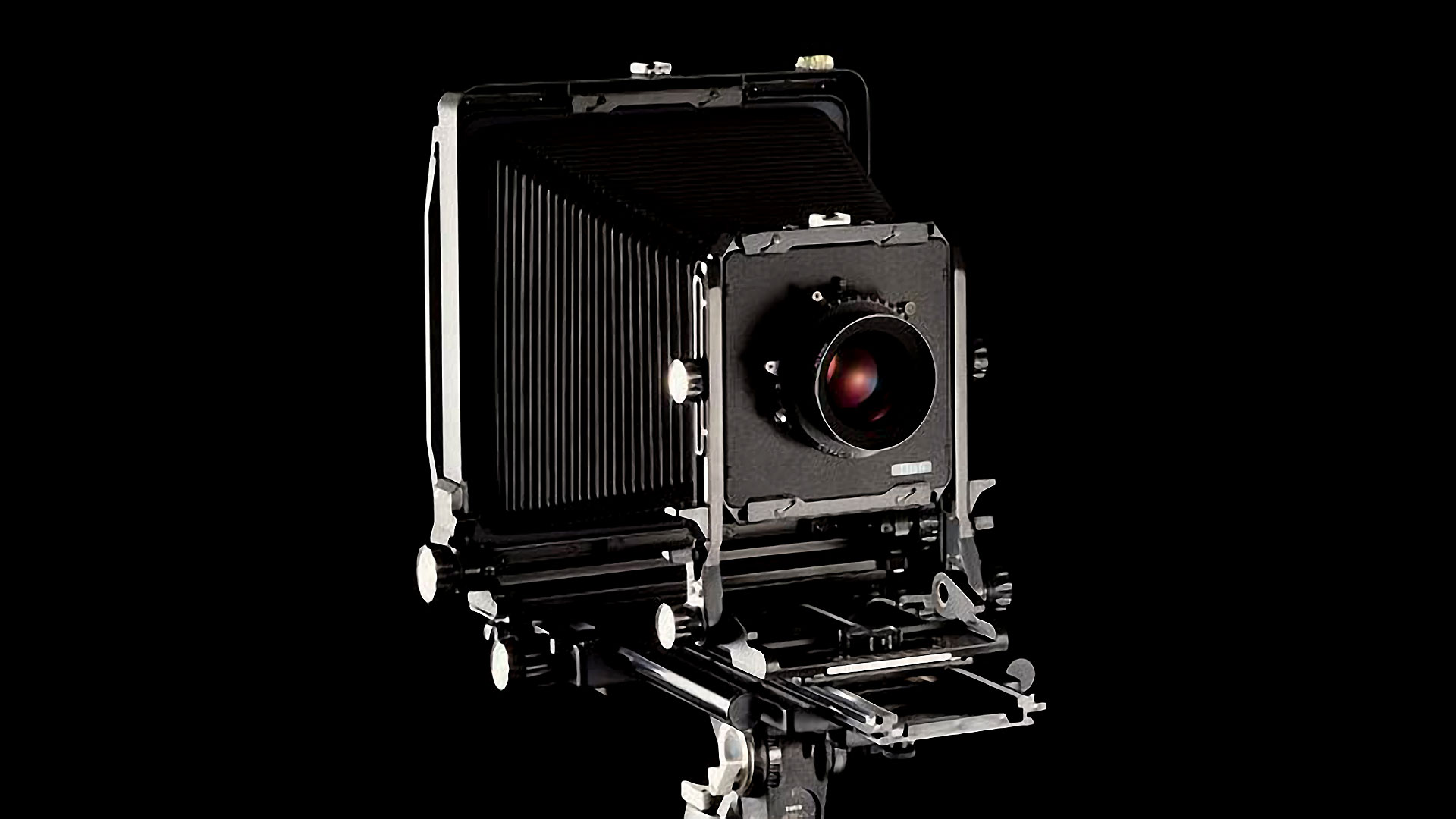
Picture cameras fall into different size categories, just as digital cameras to today. 35mm cameras were 'miniature' models, believe it or non, and medium format cameras were chosen 'medium' because there was a 'large' format to a higher place that. These use canvass film, usually measuring 5 x four", to offer supreme image quality. Well, nearly supreme, because there is besides a 10 10 eight" size with four times the negative area. The Toyo-View 8x10 810MII is an case of this camera type that's still made today. Yous'll need to source your ain lens plates and lenses, runway down 10 x 8" pic and work out how to carry a camera weighing 15lb on its own, but with sublime image quality and a broad range of lens and photographic camera back movements, it'due south a chance to follow in Ansel Adams' footsteps.
Lomography cameras
Lomography's shops and online shop provide an Aladdin'due south cave of photographic curiosities, from relaunched budget snappers from Russia to new widescreen wide-angle panoramic cameras to a 35mm kit camera you can make yourself.
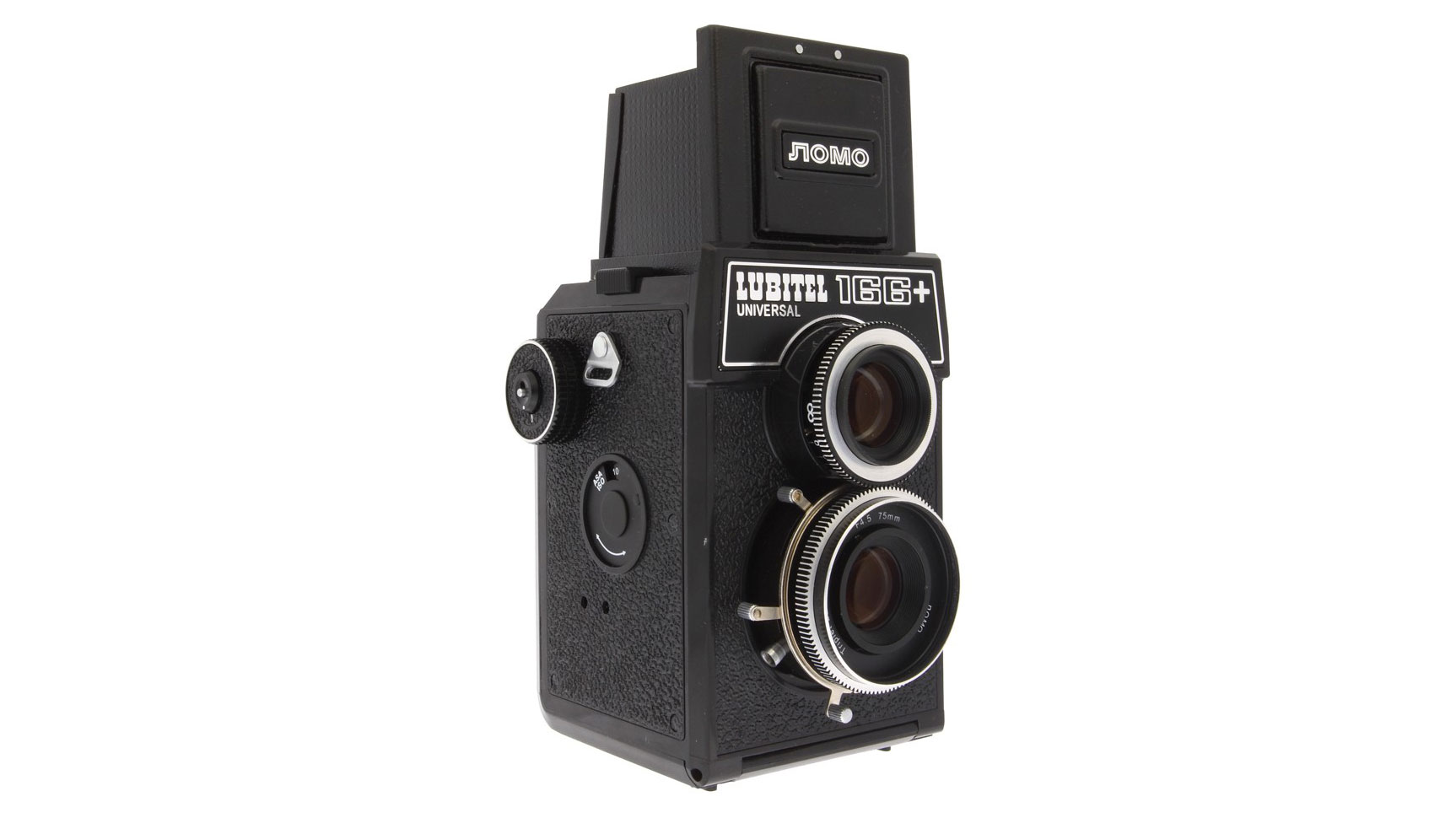
If you bought a Russian Lubitel back in the 1970s/1980s you probably paid about £8 and you were probably doing well to nurse it through a couple of rolls of film before it packed up. Nosotros oasis't tried the Lomography version but nosotros hope it will keep going a little longer – specially at this cost. The mod Lubitel 166+ is unashamedly plastic in its construction and unapologetically basic in its features. You get manual aperture control (f/4.5-22), transmission shutter speed control (1/25--1/15sec plus B) and no lite meter. But the Lubitel isn't about applied science finesse, it's well-nigh rediscovering the imperfections and naivety of old snapshot photography.
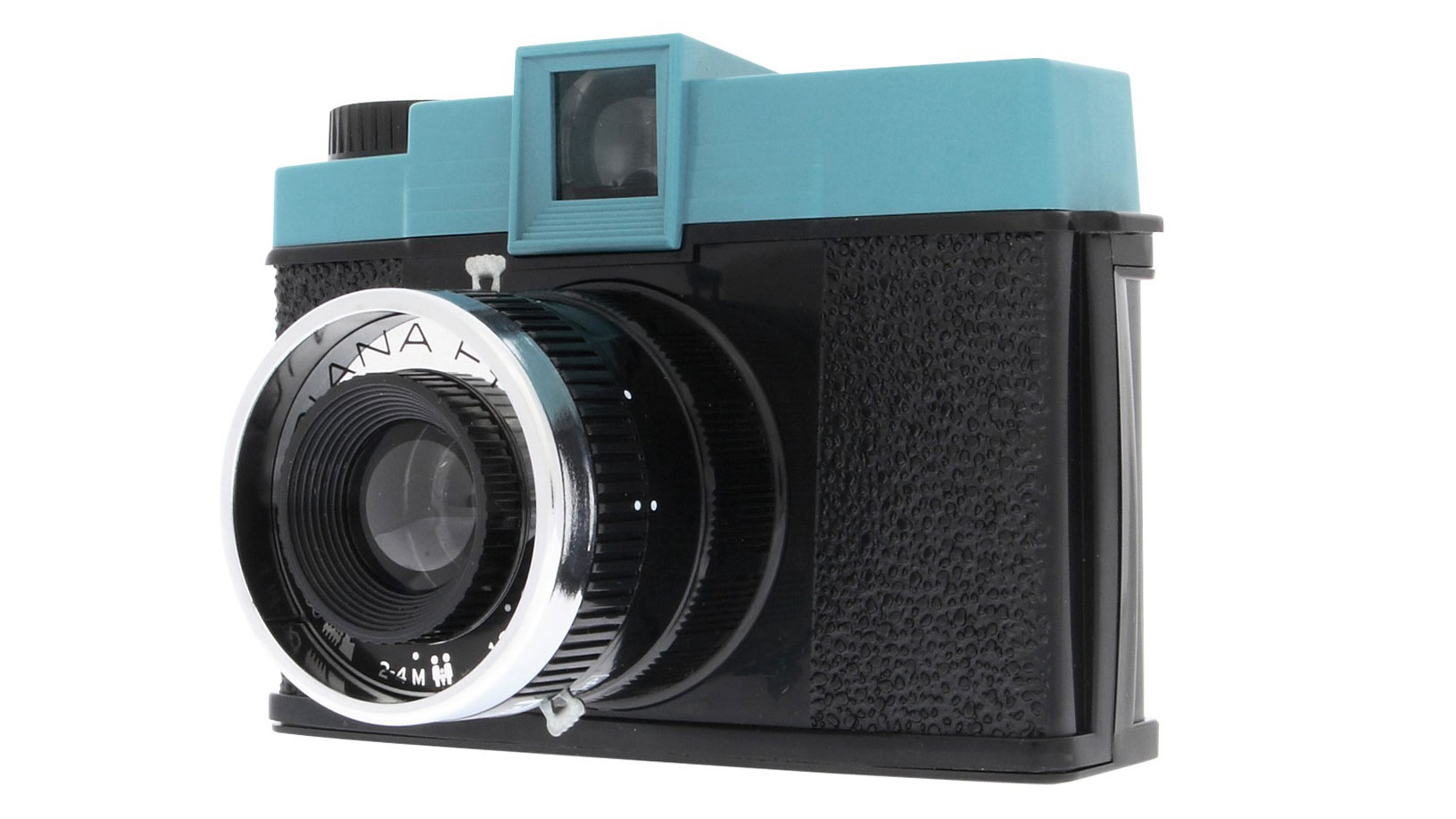
If the reimagined Lomography Lubitel 166+'due south price tag is besides rich for your blood, then there'southward always the Diana F+. It'southward a celebration of brightly-colored plastic and bargain-basement features, and a reminder of what cameras used to exist similar – and how the weather had to exist right for taking a picture. With 3-position zone focussing, only one shutter speed (1/60sec) plus b, and apertures linked to the lighting conditions (pinhole, f/8, f/11, f/xvi), you lot're going to need optimism and a willingness to experiment, for sure. On its own the Diana F+ is very cheap, but if you fancy embracing the full experience there is a boxed accessory kit with a flash, cable release, interchangeable lenses and heaven knows what else.
• Meet also All-time Lomography cameras
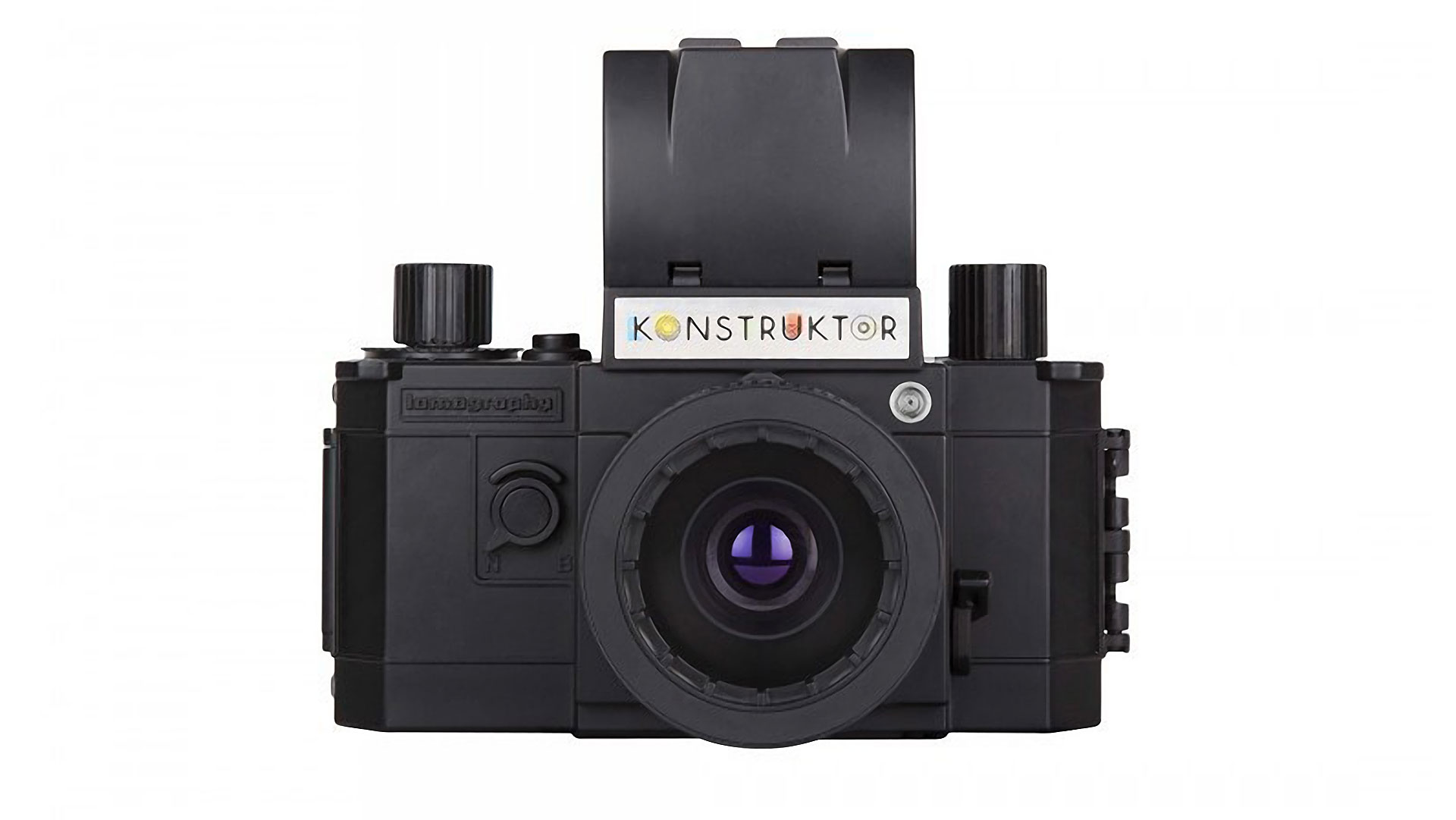
This camera is probably a lot more fun to make than it is to use. It comes as a surprisingly inexpensive kit, simply there are lots of plastic panels, parts, screws and springs to put together and then it's going to take some patience and dexterity. What you get is a camera with a plastic lens, a unmarried i/80sec shutter speed (plus B), a fixed-aperture 50mm f/ten lens and transmission (obviously) focusing. You lot'll demand patience to use it, plus some very exposure tolerant film – we'd suggest colour negative for its latitude. It does have a very interesting waist-level viewfinder though, with through-the-lens viewing provided by jump-loaded mirror lever.
• See besides Best cameras for kids
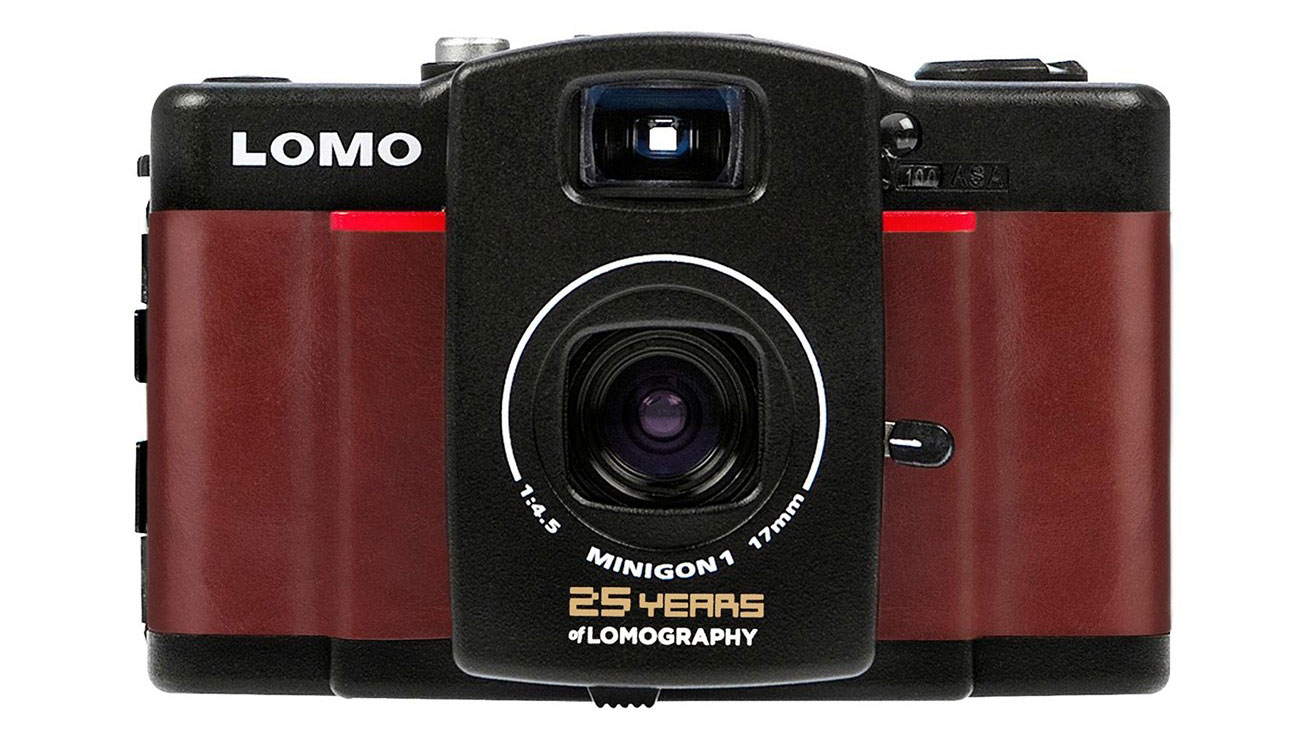
Yes, information technology's a lot to pay for a plastic camera, and you've got to exist a fan of the heavily-vignetted, super-saturated, none-too-sharp Lomo look, but the Lomo LC-Wide certainly lives upwardly to its proper name. Its 17mm lens is manner wider than the kit lens can keep whatsoever regular camera and well into ultra-wideangle territory. The LC-Wide has a streamlined pocket-friendly design that looks as contemporary every bit flared trousers (which is the idea, right) and has the luxury of automatic exposure, with shutter speeds from one/500sec to (information technology says hither) infinity and apertures from f/iv.5-16. It does need iii (yes, three) LR44 batteries, though.
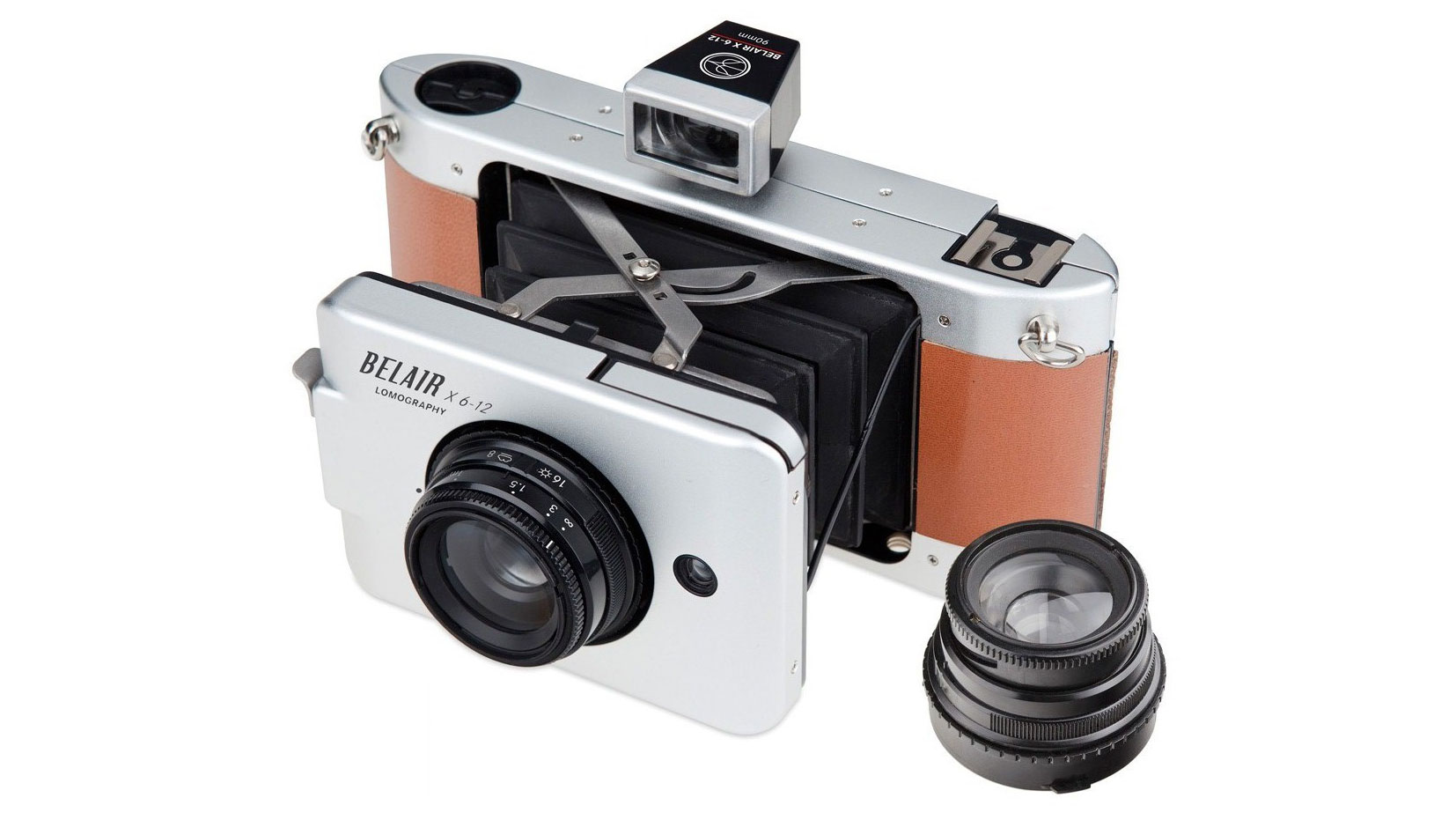
Panoramic medium format cameras are typically very expensive, but the Belair X six-12 is not. Information technology can shoot medium format images at 3 unlike aspect ratios, including 6:6 (square), six:9 and an extra broad 6:12 ratio. That'south the great thing about 120 roll picture show, that it has a stock-still 6cm height but allows camera makers to choose all manner of different frame widths. The Belair looks very cool, and the Belair trim is just one of several options. In that location'southward a lot of plastic, though, so don't look also much from the finish and feel. This has to be simply near the cheapest fashion to get into medium format panoramic photography, though, and it fifty-fifty comes with two (plastic) lenses.
Dispensable film cameras
It'southward film photography at its most basic – low cost, low chance and, er, perhaps low expectations. Single-use or disposable cameras come pre-loaded with 35mm film, pack a basic basic lens on the front and have no photographic controls. If it's bright outdoor light, y'all're fine; if you lot're indoors, use the wink. Anything in betwixt – well, you're on your own. The results are variable, simply they're corking for kids, parties, holidays and cheap gifts.
•Come across also Best disposable cameras
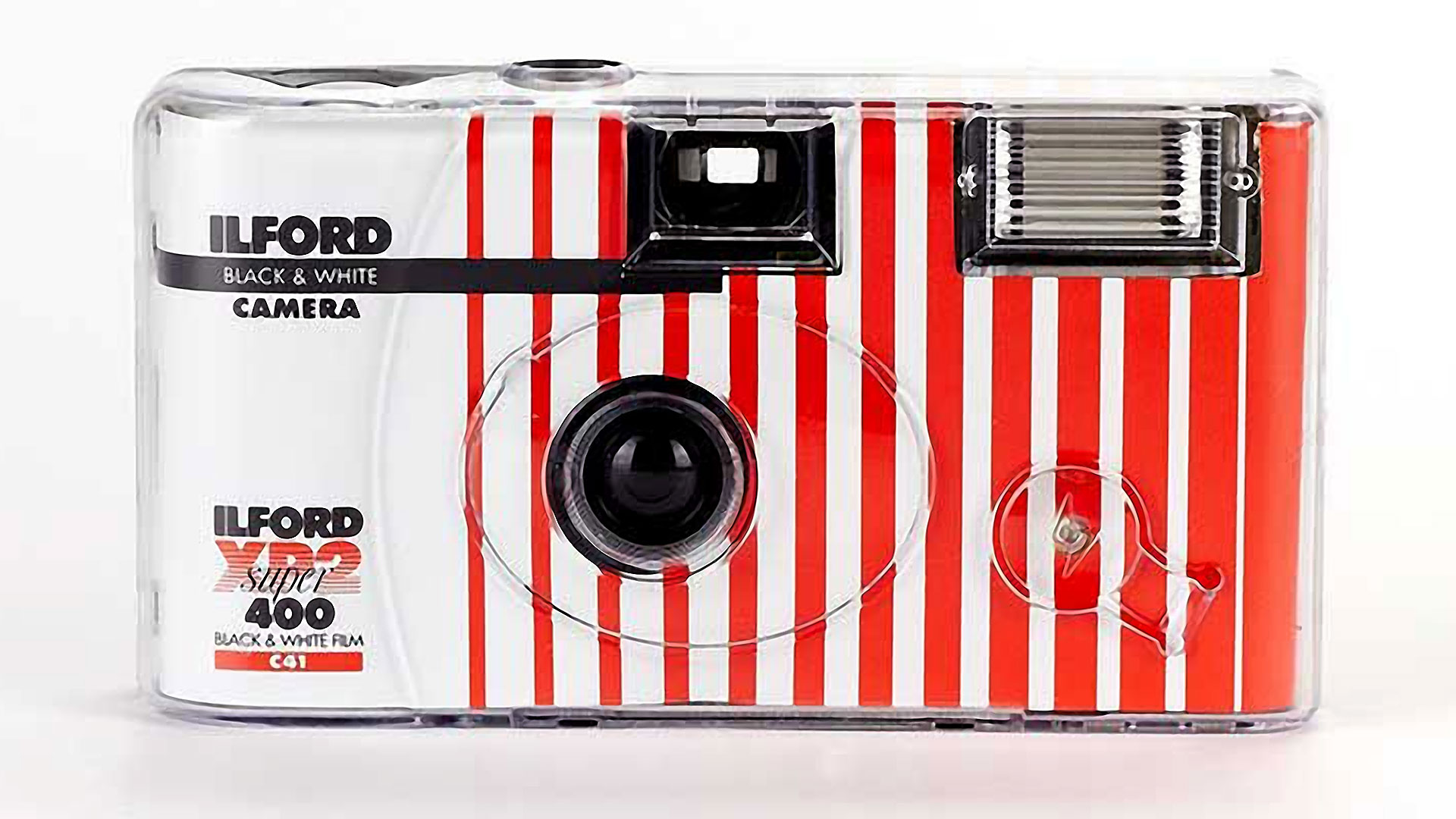
Ilford's single-utilize camera looks no more sophisticated than any of its rivals, but information technology's what's inside that's interesting. It's loaded with Ilford's XP2 black and white film, which is pretty unique in that information technology can exist developed with regular C41 chemicals which are used for developing color impress films around the earth (other black and white films need chemicals formulated by people wearing thick glasses and lab coats). If you decide you prefer your black and white with traditional chemical science you tin use yourself (handily, it works at room temperatures), you can get unmarried-utilize variant loaded with Ilford's classic ISO 400 HP5 Plus movie. There's even a colour version loaded with "Ilfocolor" Film, which dates back to the 1960s and gives a real retro feel.
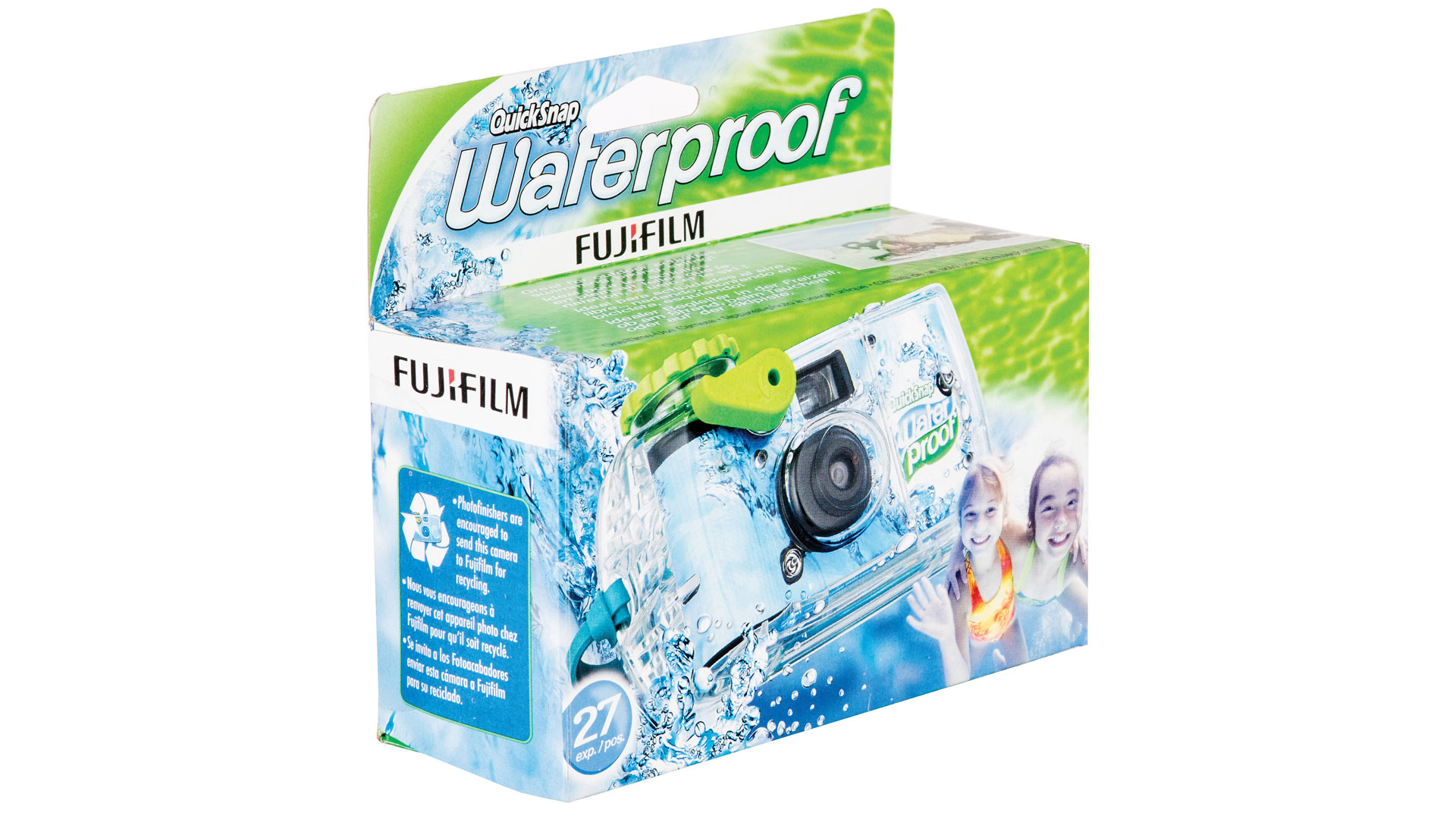
Yep, information technology does cost a few pounds more your usual dispensable camera, only you're getting a waterproof camera, for heaven's sake! Fujifilm says its plastic instance is h2o-resistant to a depth of 10m, so it's probable you're going to exist in trouble long before the camera is. The Fujifilm Quicksnap Marine comes loaded with 24 exposures of Fujifilm ISO 800 Superia colour negative motion-picture show which you should exist able to get developed at any regular high street chemist or online photo lab. Control is limited, obviously, in that there isn't any. The exposure is fixed at one/125sec at f/x then really you're going to demand skillful outdoor lite to get decent results, but that'due south truthful of any unmarried-use camera.
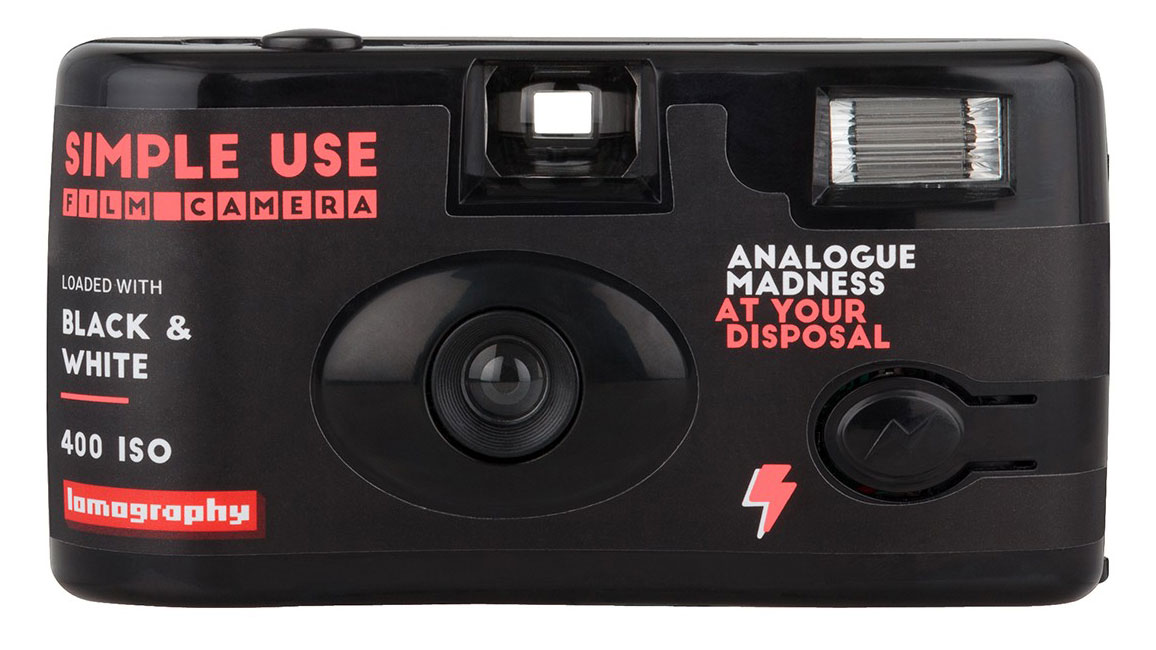
Hither you lot become ii new adventures for the price of one. You can return to the lo-fi land that time forgot with this super-basic disposable camera and try out the tonality of one of Lomography's own black and white films. You might have to hunt around a picayune to notice a lab to practice the processing, simply Lomography does in fact run its own lab so you can ever send the camera dorsum for processing when you're done. The photographic camera is cheap, but analog processing, sadly, is not, but that's the difference betwixt analog and digital – y'all're capturing the globe on a concrete medium, not just as a agglomeration of binary bits.
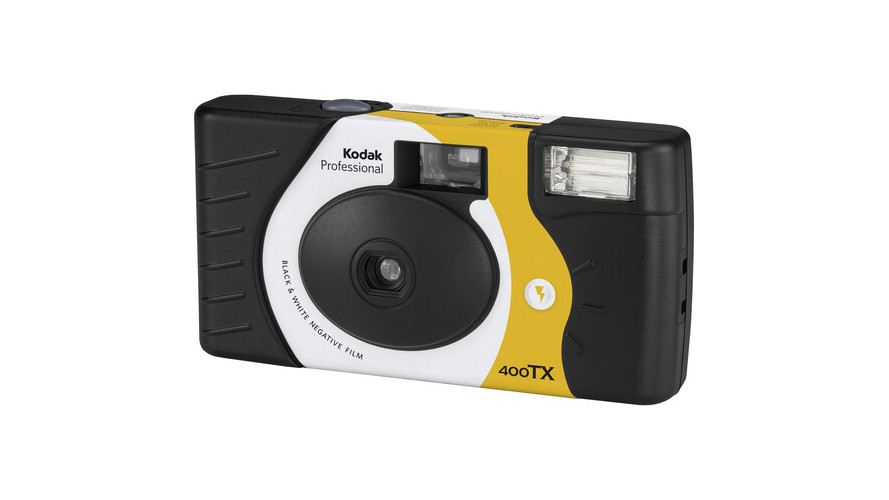
Kodak's Tri-10 400 is one of the nigh famous monochrome films of its era, with many photographers falling in dearest with it for its dramatic, contrast-y await. At present, information technology'due south bachelor in a single-use camera, which may make for the perfect gateway drug for anyone looking to dip their toes into counterpart photography. As well as 27 shots of Tri-X, you also go what Kodak describes every bit the nearly powerful flash on a disposable photographic camera, which perfectly complements the high-key drama of the Tri-X motion picture stock.
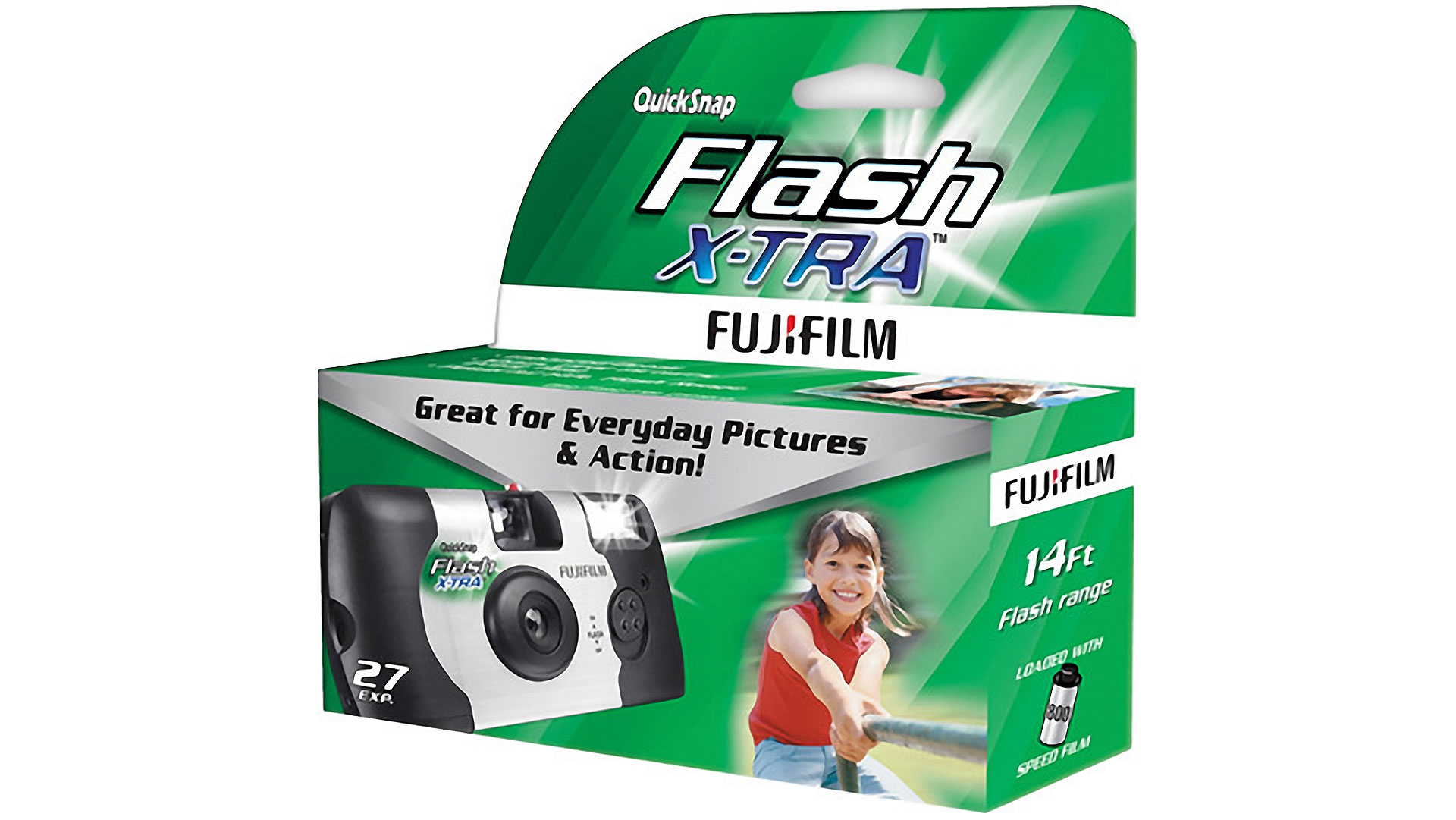
The Fujifilm Quicksnap Wink 400 is pretty ubiquitous and typical for 35mm disposable cameras. We've not been able to find out anything nearly the lens but it's pretty articulate it's going to be a semi-wide plastic lens with a modest stock-still aperture and a unmarried, fixed shutter speed. This camera likewise comes with a flash, and so information technology'due south a chip of a mystery how they make them for this money. The quality will depend on how well yous choose the lighting weather condition – information technology's going to work best outdoors in good low-cal, though the wink has a range of 10ft so indoor party shots are possible likewise, only expect eighties-fashion ruddy-eye furnishings and rabbit-in-the-headlights facial expressions.
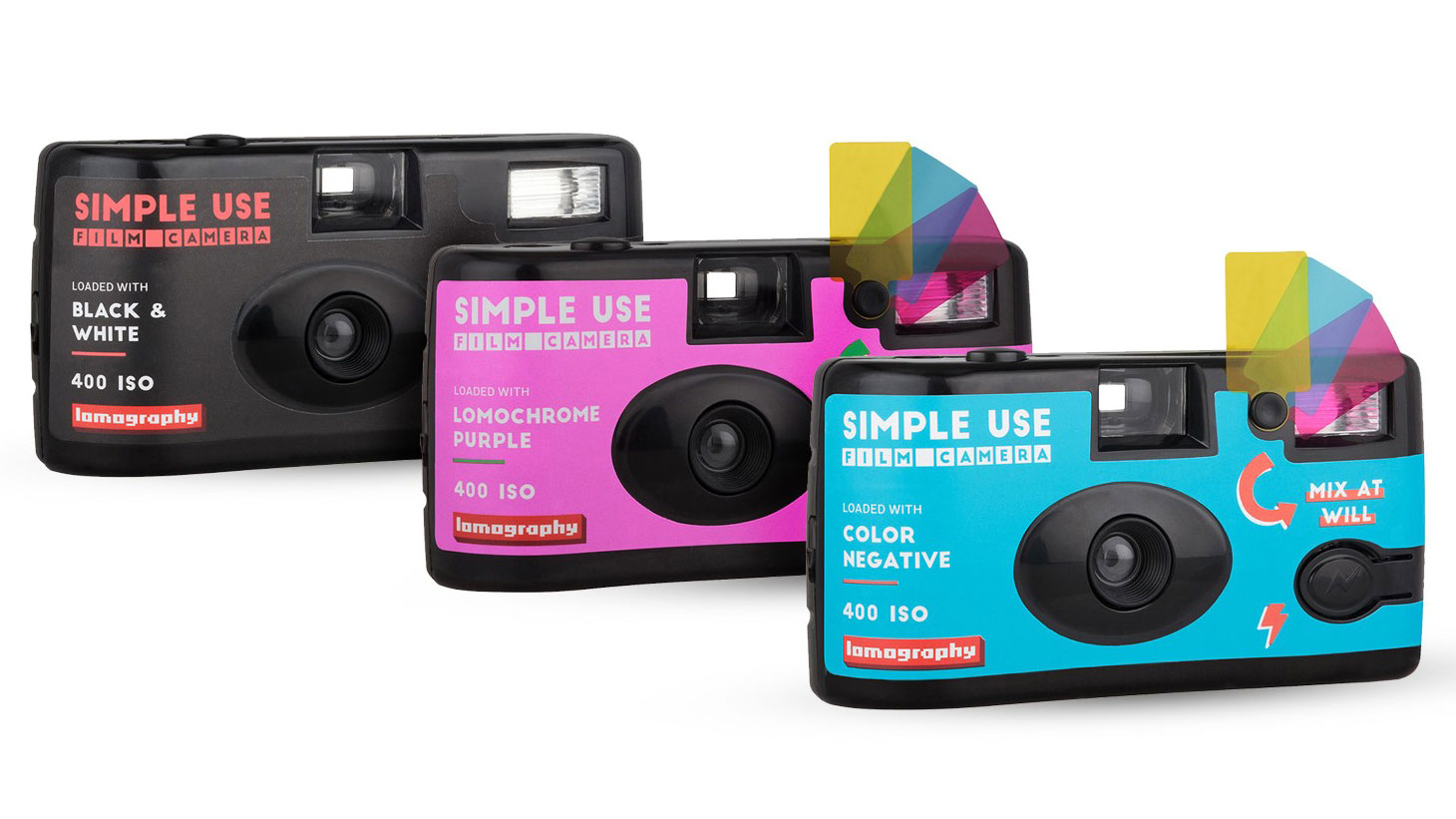
Fancy trying analog photography simply don't want to commit to an actual, proper camera? Then these re-usable cameras from Lomography could be perfect, especially since you get to try out 3 different films from the Lomography range. One is loaded with regular ISO 400 color negative picture show, one uses Lomography'south Lady Grayness ISO 400 blackness and white film – but the virtually heady is loaded with ISO 400 Lomography Purple, which gives images a surreal purplish-green infrared effect... kind of. With what looks like a fixed shutter speed of i/12sec and an aperture of f/9, information technology looks like these cameras will lean heavily on the legendary exposure latitude of negative film, only there is a built in flash (with colored gels, even).
Film buyers' guides:• T he best 35mm film
• The best 120 coil film
• The best sheet film
Read more photographic camera buying guides:• The best instant cameras
• The best DSLRs, whatever your budget
• The best cameras for beginners
• The best dispensable cameras
• Best slide viewers
• The all-time Lomography cameras
Related articles
Source: https://www.digitalcameraworld.com/buying-guides/best-film-cameras
Posted by: dixongionit.blogspot.com


0 Response to "Do You Need A Good Camera To Make A Professional Film"
Post a Comment